 |
|
|
HOME
|
US Navy -
ships
|
US Navy - air
units
|
USMC - air
units
|
International
Navies
|
Weapon Systems
|
Special Reports |
|
|
US Navy Independence class Littoral Combat Ship - LCS |
|
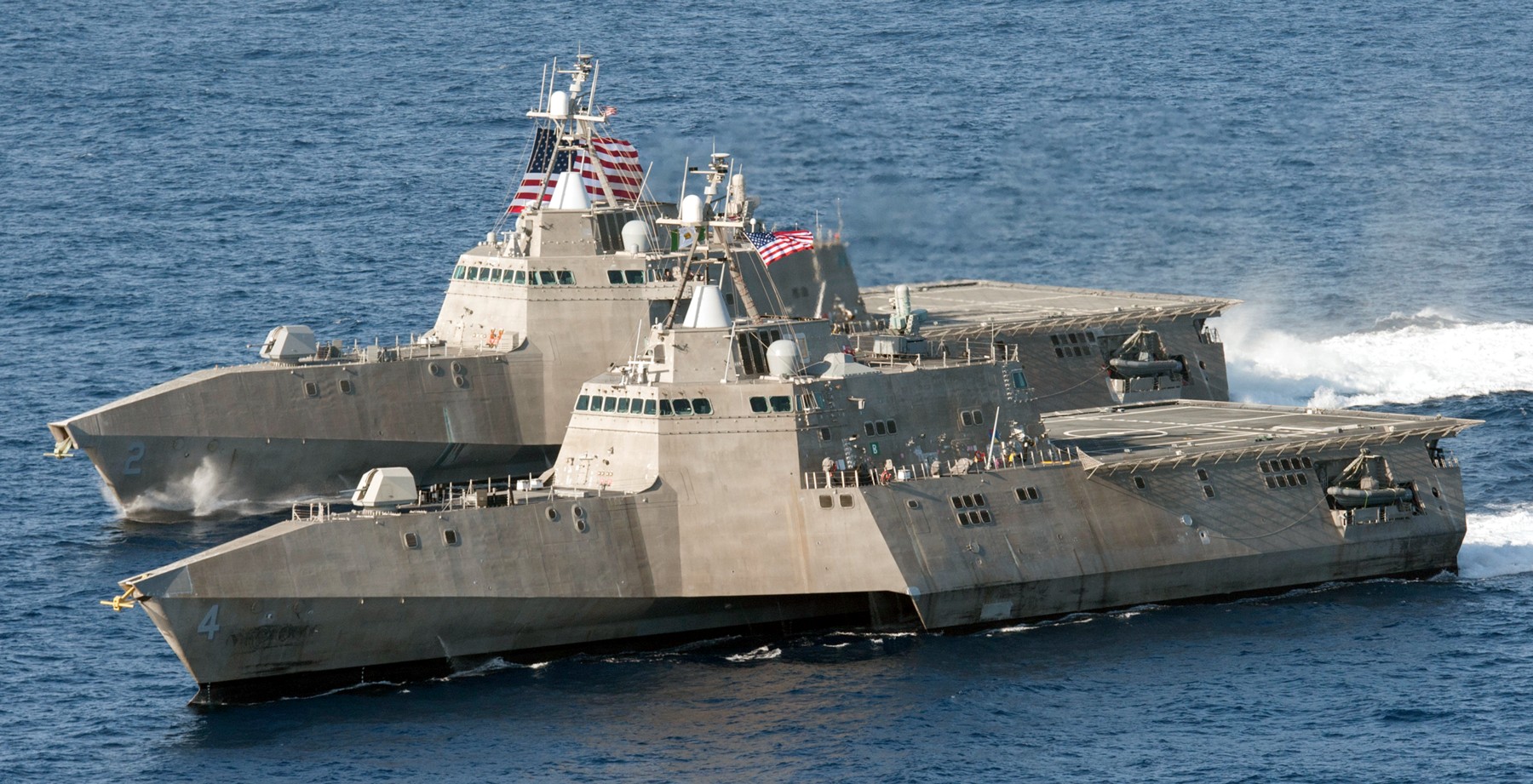 |
|
| 11/24 | |
| Ships: | |
|
LCS 2
USS Independence
(2010) LCS 4 USS Coronado (2014) LCS 6 USS Jackson (2015) LCS 8 USS Montgomery (2016) LCS 10 USS Gabrielle Giffords (2017) LCS 12 USS Omaha (2018) LCS 14 USS Manchester (2018) LCS 16 USS Tulsa (2019) LCS 18 USS Charleston (2019) LCS 20 USS Cincinnati (2019) LCS 22 USS Kansas City (2020) LCS 24 USS Oakland (2021) LCS 26 USS Mobile (2021) LCS 28 USS Savannah (2022) LCS 30 USS Canberra (2023) LCS 32 USS Santa Barbara (2023) LCS 34 USS Augusta (2023) LCS 36 USS Kingsville (2024) LCS 38 USS Pierre (?) |
|
| Specifications: | |
|
Builder:
Austal-USA, Mobile, Alabama, USA (General
Dynamics LCS Team) Displacement: 3100 tons (full load) Length: 127.4 meters (418 feet) Beam: 31.6 meters (104 ft) Draft: 4.3 meters (14 ft) Speed: 44+ knots (81+ km/h), max. Range: 4300 NM (7964 km) at 18 knots (33 km/h) Complement: 40 core crew / accomodations for 75 Propulsion: CODAG (combined Diesel and Gas) 2 x General Electric LM2500 gas turbines (96550 hp) 2 x MTU Friedrichshafen 20V8000 series diesel engines (17160 hp) 2 x American VULKAN light weight multiple-section carbon fiber propulsion shaftlines 2 x LJ160E and 2 x LJ150E Wärtsilä waterjets 1 x retractable bow-mounted azimuth thruster
Aviation: 1 x MH-60R/S Seahawk helicopter 1-2 x MQ-8B / MQ-8C Fire Scout UAV’s Systems: SAAB AN/SPS-77(V)1 Sea GIRAFFE 3D air and surface search radar Sperry Marine BridgeMaster E navigational radar AN/KAX-2 electro-optical sensor with TV and FLIR Northrop Grumman ICMS (Integrated Combat Management System) ITT Corporation ES-3601 ESM system SRBOC decoy launchers for chaff and infrared decoys BAE Systems NULKA active radar decoy system |
|
|
Planning and construction: Planning for a class of smaller, agile, multipurpose warships to operate in the littoral zone began in the early 2000s. In July 2003, a proposal by General Dynamics (partnering with Austal USA, the American subsidiary of Australian shipbuilder Austal) was approved by the Navy, with a contract for two vessels. These would then be compared to two ships built by Lockheed Martin to determine which design would be taken up by the Navy for a production run of up to 55 ships. The first ship, Independence was laid down at the Austal USA shipyard in Mobile, Alabama, on 19 January 2006. The planned second ship was cancelled in November 2007, but reordered in May 2009, and laid down in December of that year as Coronado, shortly before Independence was launched. The development and construction of Independence as of June 2009 was running at more than 3 times budget. The total projected cost for the ship is $704 million. The Navy had originally projected the cost at $220 million. Independence began builder's trials in July 2009, three days behind schedule because of maintenance issues. A leak in the port gas turbine saw the order of trials altered, but builder's and acceptance trials were completed by November, and although her first INSURV inspection revealed 2,080 deficiencies, these were rectified in time for the ship to be handed over to the Navy in mid-December, and commissioned in mid-January 2010. Navy leaders said that the fixed price competition offered the Austal design an equal shot, in spite of its excess size, cost and limited service. After much inconsistency on how testing and orders were to proceed, in November 2010, the Navy asked that Congress approve ten of each of the Independence and Freedom classes. Design: The Independence-class design began life at Austal as a platform for a high-speed cruise ship. The principal requirements of that project were speed, stability and passenger comfort, and Austal's team determined that the trimaran hull form offered significant passenger comfort and stability advantages over both a catamaran and a monohull. The high-speed cruise ship project evolved into Austal's commercial high-speed trimaran ferry HSC Benchijigua Express. The ships are 127.4 m (418 ft) long, with a beam of 31.6 m (104 ft), and a draft of 13 ft (3.96 m). Their displacement is rated at 2,176 tons light, 2,784 tons full, and 608 tons deadweight. The standard ship's company is 40, although this can increase depending on the ship's role with mission-specific personnel. The habitability area with bunks is located under the bridge. The helm is controlled by joysticks instead of traditional steering wheels. Although the trimaran hull increases the total surface area, it is still able to reach sustainable speeds of about 50 knots (93 km/h; 58 mph), with a range of 10,000 nautical miles (19,000 km; 12,000 mi). Austal claims that the design will use a third less fuel than the competing Freedom-class, but the Congressional Budget Office found that fuel would account for 18 percent or less of the total lifetime cost of Freedom. The lack of bridge wings on the Independence class had been noted as the top problem in the entire LCS program to the extent that these will need to be retrofitted onto existing ships. The lightweight aluminum construction of the Independence-class ships makes them more vulnerable to damage than the Freedom-class ships. The first ships of both LCS classes were delivered before the designs were mature so that improvements could be built into future ships. The Navy is improving the Independence-class with bridge wings for safety and replacing the 5.1-metre (17 ft) Rigid Hull Inflatable Boat (RHIB) with a 7-metre (23 ft) boat. An improved cathodic protection system will enhance corrosion protection. Like the Freedom-class, the Independence vessels will be getting axial flow water jets which pushes water parallel to the shaft of the impeller to improve efficiency and reduce maintenance; they will also be upgraded to handle the horsepower provided by the gas turbine propulsion system. A winch control system will modulate the motion of the anchor to reduce the reliance on manual hand brakes. The mission bay side door will be redesigned for reliability and the platform lift elevator reconfigured to better handle weapons and ordnance. Mission modules: The LCS is reconfigured for various roles by changing mission packages, each of which includes mission module equipment (weapon systems, sensors, etc.), carried craft and mission crews. Modules include Anti-submarine warfare (ASW), mine countermeasures (MCM), surface warfare (SUW), and special warfare missions. The MCM and SUW modules are planned to reach initial operating capability in Fiscal year 2014, and the ASW module in FY2016. Module changes were envisioned to allow a single LCS to change roles in a matter of hours at any commercial port allowing it to rapidly optimize effectiveness against a threat. A report from the Office of the Chief of Naval Operations (OPNAV) on a January 2012 sustainment wargame reportedly stated that, possibly for logistics reasons, the mission module changes may take as long as weeks, and that in the future the navy plans to use LCS ships with a single module, with module changes being a rare occurrence. In 2014, Independence switched from mine to surface warfare modes in 96 hours on short notice. In an 8 September 2016 announcement, the Navy revealed a radical change in operations and organization plans for the LCS. Of the 28 Flight 0 ships built or on order, the first four, two of each class, will be turned into training ships and the remaining 24 will be divided into six divisions of four ships each; three divisions of the Freedom class based at Naval Station Mayport, Florida and three divisions of the Independence class based at Naval Station San Diego, California. The new organization does away with the LCS' signature interchangeable mission module concept, with each division being tasked to fulfill one of the three mission sets. Crewing is also changed into a more simplified two-crew "blue/gold" model, like that used on submarines and minesweepers, where ships cycle to forward deployed locations with the two crews swapping roles every 4-5 months; aviation detachments will also deploy with the same LCS crew, creating an arrangement of a core 70-sailor crew to conduct the warfare mission and a 23-person air detachment. Modular mission capability: The Independence-class carries a default armament for self-defense, and command and control. Unlike traditional fighting ships with fixed armament such as guns and missiles, tailored mission modules can be configured for one mission package at a time. Modules may consist of manned aircraft, unmanned vehicles, off-board sensors, or mission-manning detachments. The interior volume and payload is greater than some destroyers and is sufficient to serve as a high-speed transport and maneuver platform. The mission bay is 15,200 square feet (1,410 m2), and takes up most of the deck below the hangar and flight deck. With 11,000 cubic metres (390,000 cu ft) of payload volume, it was designed with enough payload and volume to carry out one mission with a separate mission module in reserve, allowing the ship to do multiple missions without having to be refitted. One Mobicon Flexible Container Handling System is carried on each ship in order to move mission containers. In addition to cargo or container-sized mission modules, the bay can carry four lanes of multiple Strykers, armored Humvees, and their associated troops. An elevator allows air transport of packages the size of a 20-foot-long (6.1 m) shipping container that can be moved into the mission bay while at sea. A side access ramp allows for vehicle roll-on/roll-off loading to a dock and would have allowed the ship to transport the since-cancelled Expeditionary Fighting Vehicle. Armament and systems: The Raytheon SeaRAM missile defense system is installed on the hangar roof. The SeaRAM combines the sensors of the Phalanx 1B close-in weapon system with an 11-missile launcher for the RIM-116 Rolling Airframe Missile, creating an autonomous system. The Independence-class ships also have an integrated LOS Mast, Sea Giraffe 3D Radar and SeaStar Safire FLIR. Northrop Grumman has demonstrated sensor fusion of on and off-board systems in the Integrated Combat Management System (ICMS) used on the LCS. The vessels have an Interior Communications Center that can be curtained off from the rest of bridge instead of the heavily protected Combat Information Center found on other Navy warships. Side and forward surfaces are angled for reduced radar profile. The Fleet-class unmanned surface vessel is designed for operations from Independence-class ships. The flight deck, 1,030 m2 (11,100 sq ft), can support the operation of two SH-60 Seahawk helicopters, multiple unmanned aerial vehicles, or one CH-53 Sea Stallion helicopter. H-60 series helicopters provide airlift, rescue, anti-submarine, radar picket and anti-ship capabilities with torpedoes and missiles. DARPA's Tactically Exploited Reconnaissance Node (TERN) program aims to build a Medium-altitude long-endurance unmanned aerial vehicle (MALE UAV) that can operate from LCS-2 and can carry a payload of 600 pounds (270 kg) out to an operational radius of 600-900 nautical miles (1,100-1,700 km). First flight of a TERN demonstrator is expected in 2017. The trimaran hull will allow flight operations up to sea state 5. Austal USA vice president Craig Hooper has responded to critics of the class's light armament by suggesting that the ships employ long range drones instead. On 8 March 2017, Sister LCS class USS Detroit (LCS-7) successfully test fired a vertical-launched AGM-114 Hellfire missile, the first such launch from a littoral combat ship. The Hellfire system on littoral combat ships is meant to engage smaller agile vessels and strike targets on land. In late July 2014, the U.S. Navy confirmed that the Naval Strike Missile would be tested aboard the littoral combat ship USS Coronado (LCS-4). The test occurred successfully on 24 September 2014. Kongsberg and Raytheon teamed to pitch the NSM to equip the LCS as its over-the-horizon anti-ship missile in 2015. By May 2017, the extended-range Boeing RGM-84 Harpoon and Lockheed Martin LRASM had been withdrawn from the Navy's Over-the-Horizon Weapon System (OTH-WS) competition, leaving the NSM as the only remaining contender. On 31 May 2018, the Navy officially selected the NSM to serve as the LCS' OTH anti-ship weapon. The $14.8 million initial contract award to Raytheon calls for the delivery of Kongsberg-designed "encanistered missiles loaded into launching mechanisms; and a single fire control suite,” and buys about a dozen missiles; the entire contract value could grow to $847.6 million if all contract options are exercised. The NSM will be designated as the RGM-184A in US service. The control system for this class is provided by General Dynamics Advanced Information Systems through an open architecture computing infrastructure (OPEN CI), while Lockheed provides their own control system for their variant of the LCS. OPEN CI includes the information technology (IT) infrastructure for the combat and seaframe control systems. This IT infrastructure also includes the primary operator interface for the control and monitoring of mission module operations. The General Dynamics OPEN CI is also used on the Austal-built Spearhead-class Joint High Speed Vessel. source: wikipedia |
|
|
class + detail images for more images go to the individual ship's pages |
|
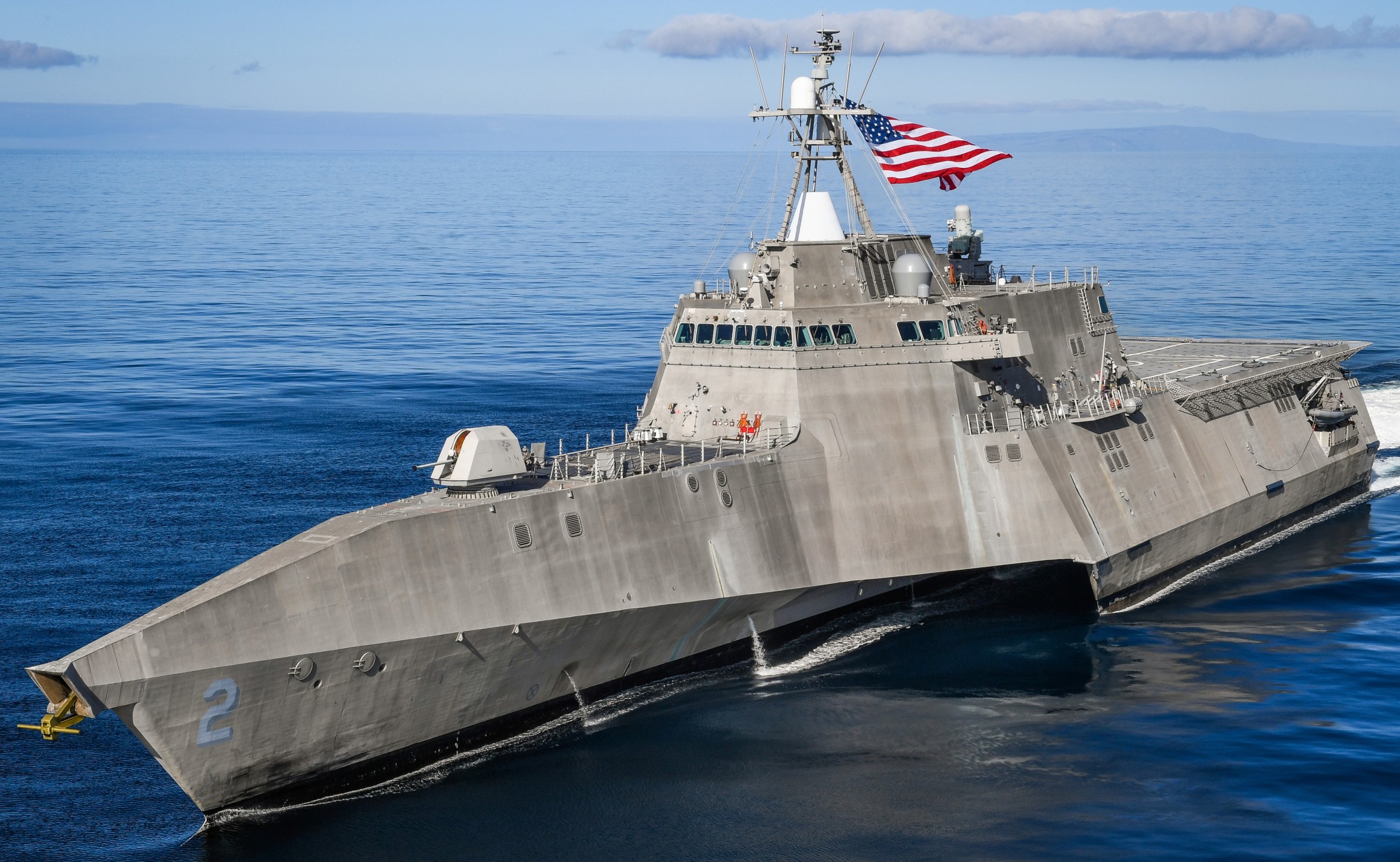 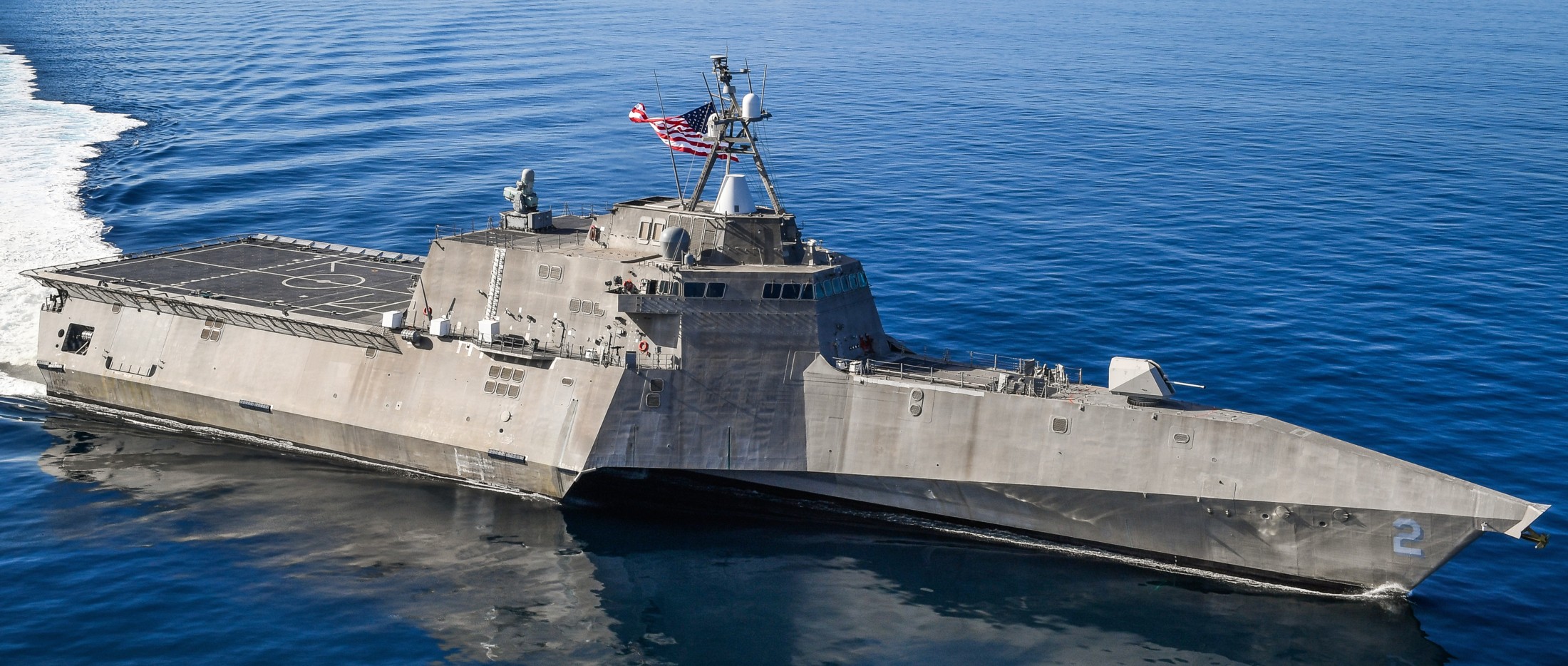 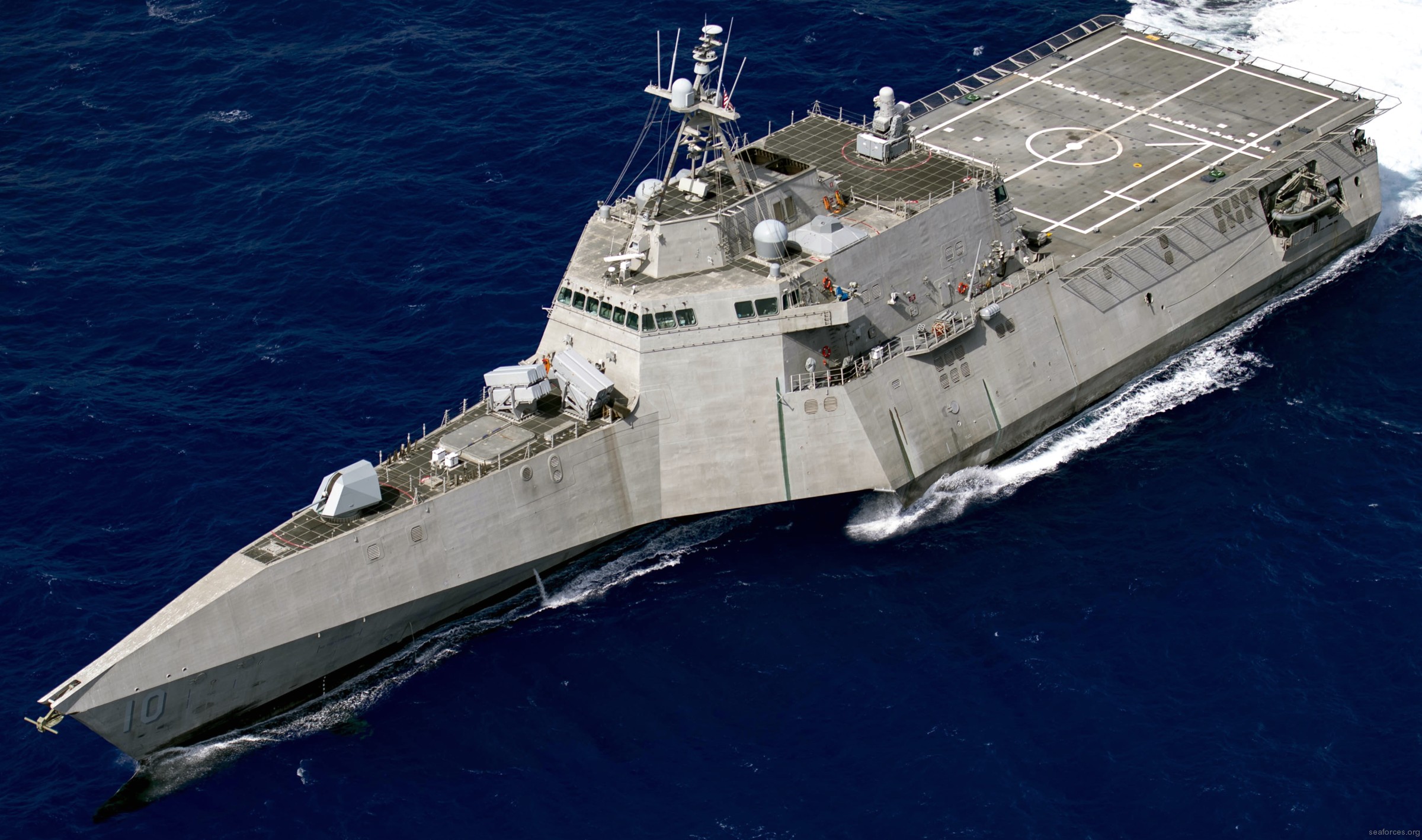  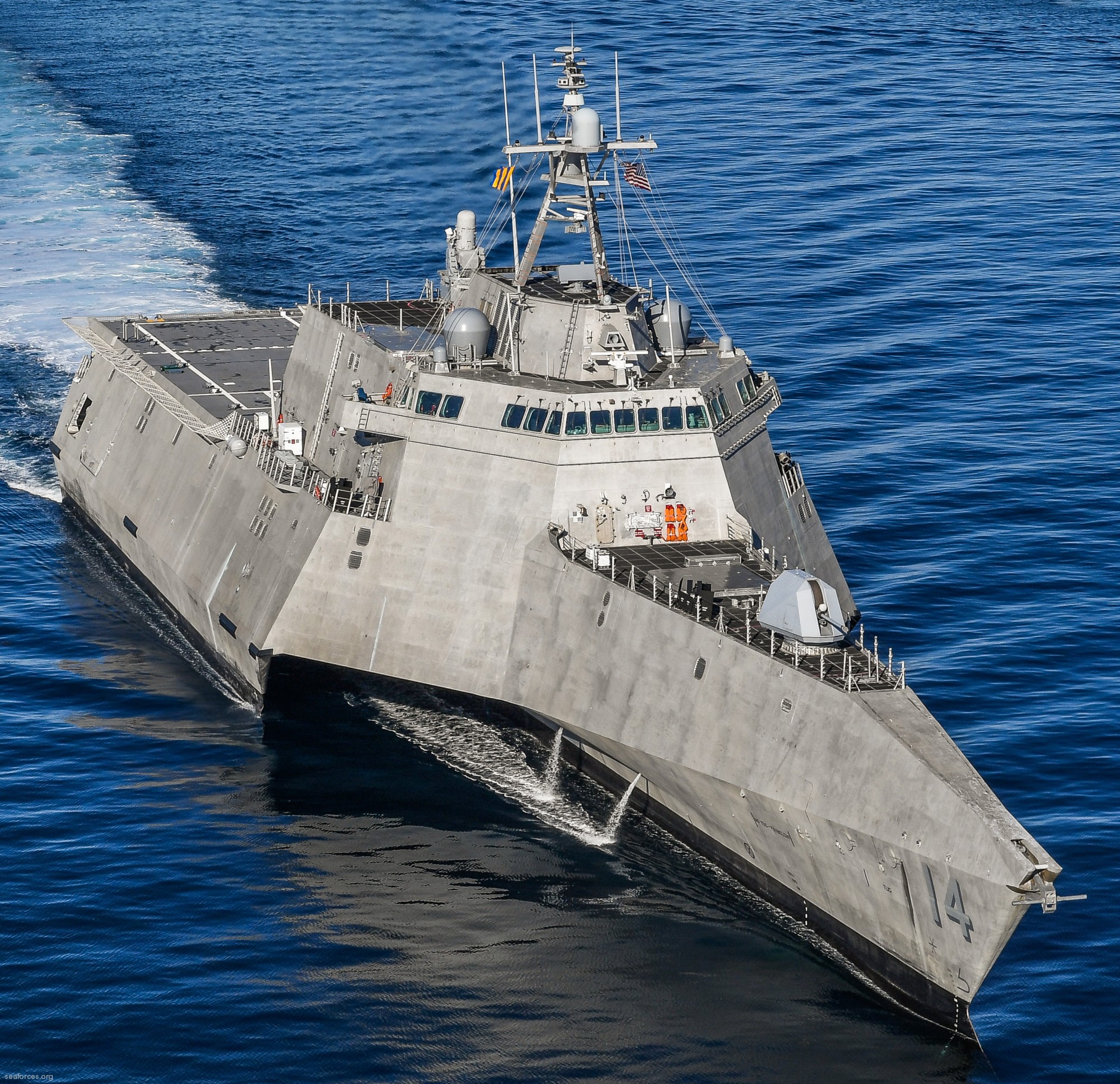  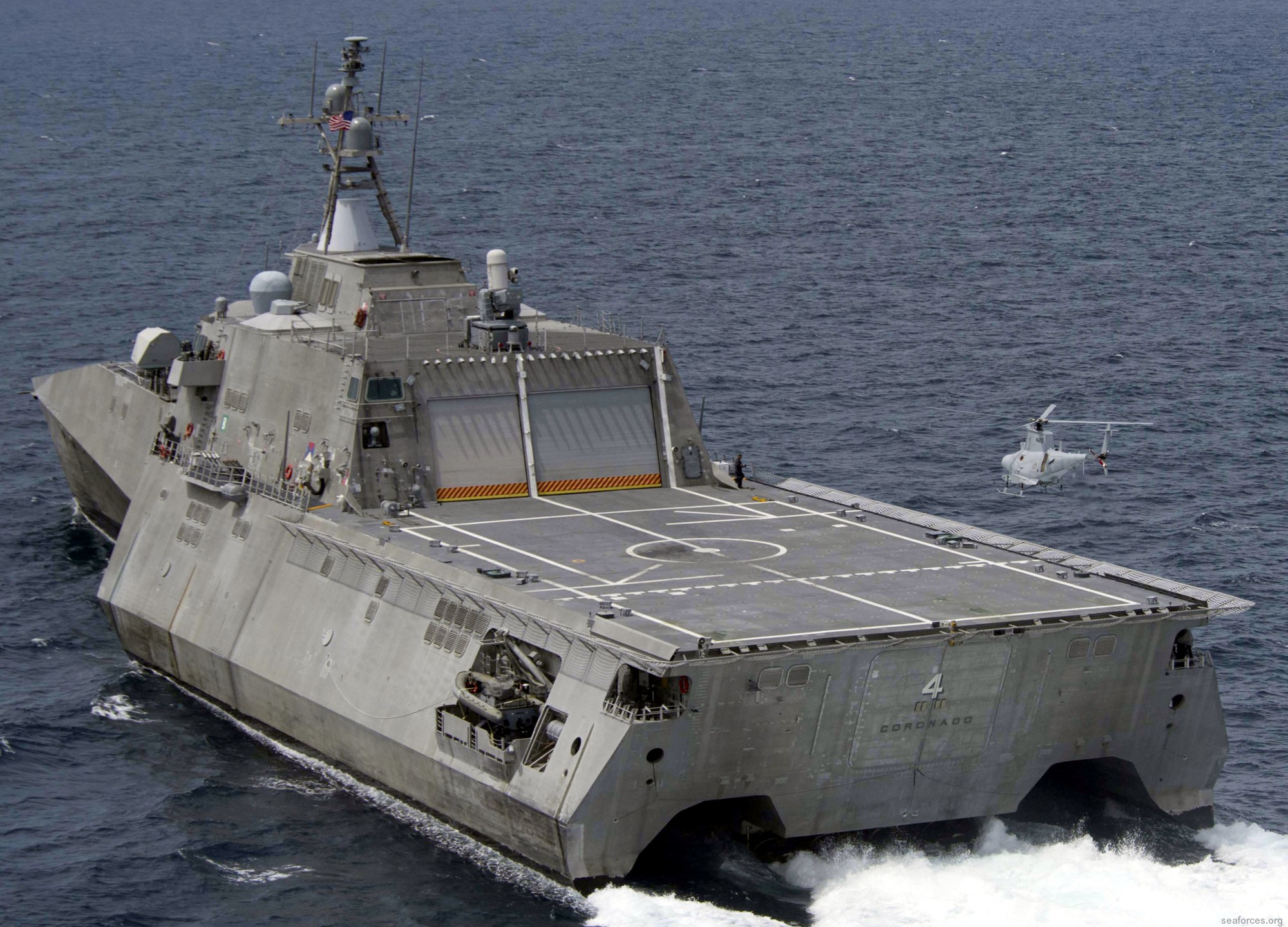 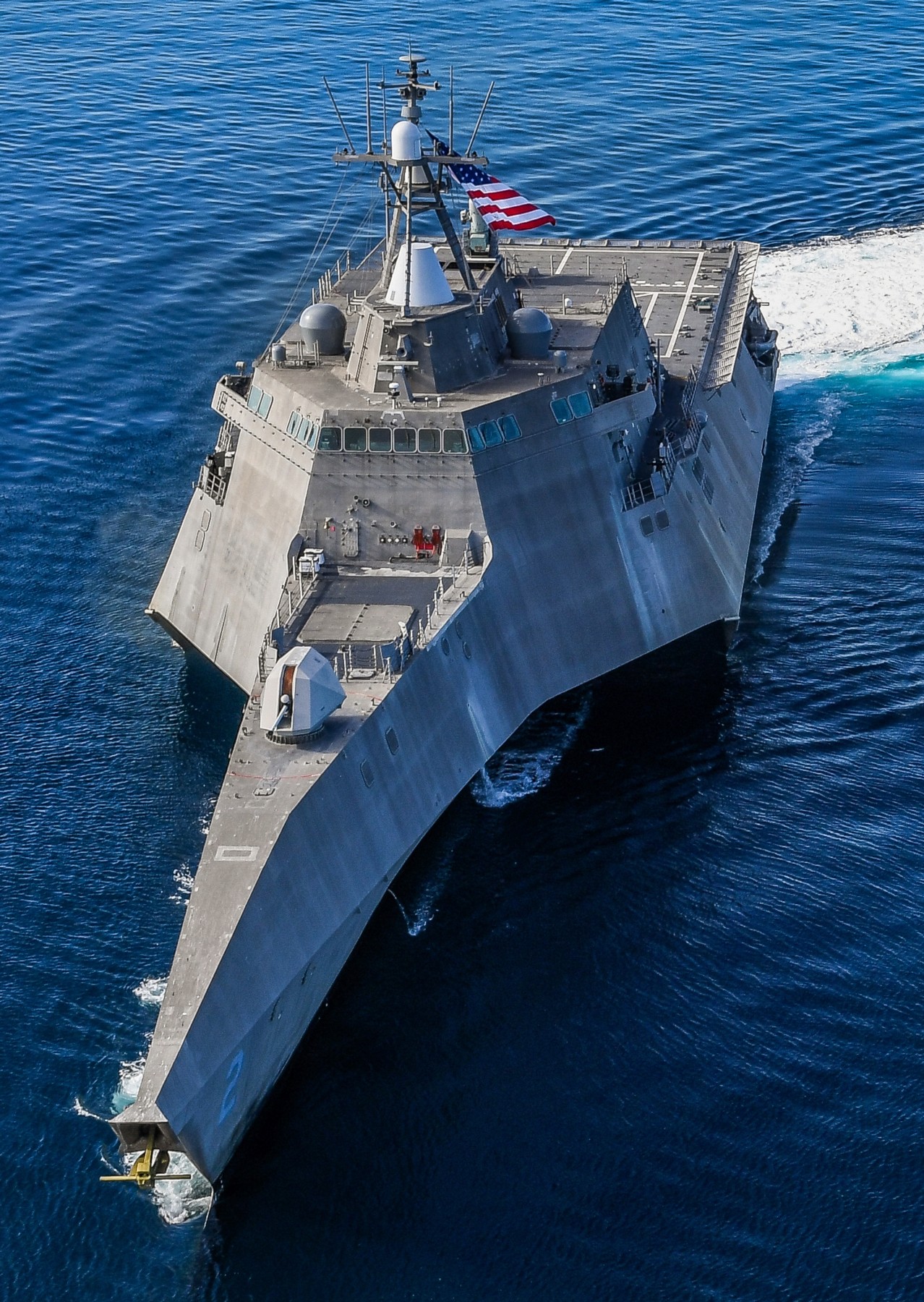 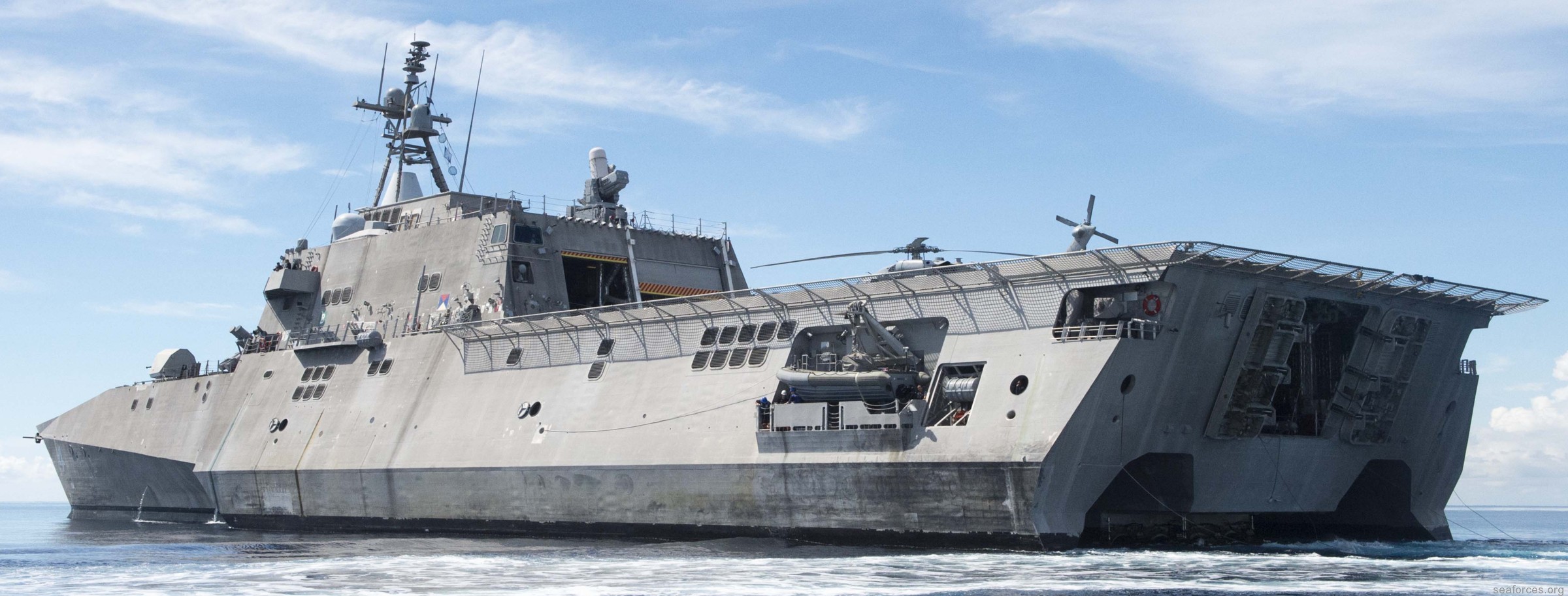 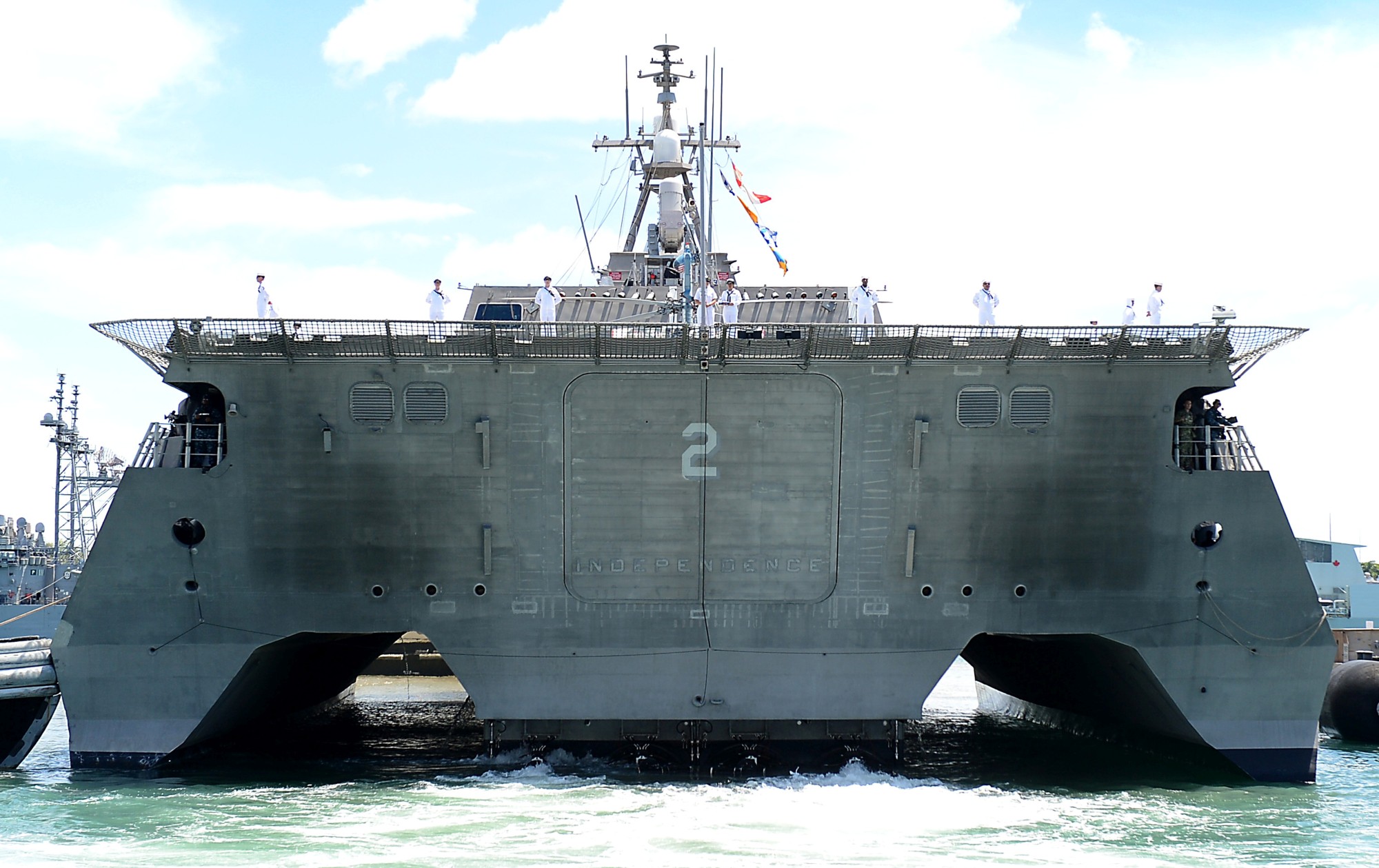 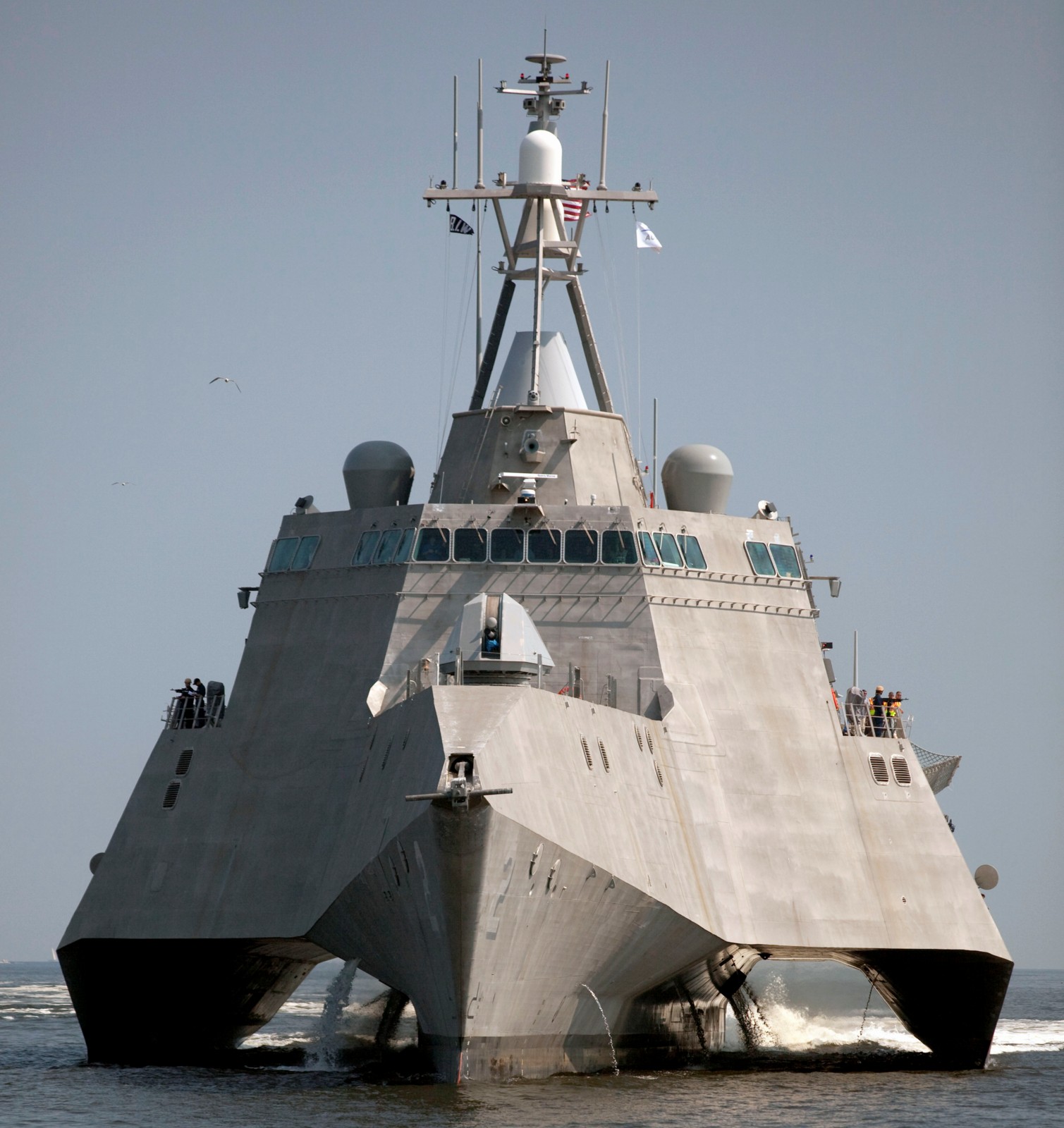 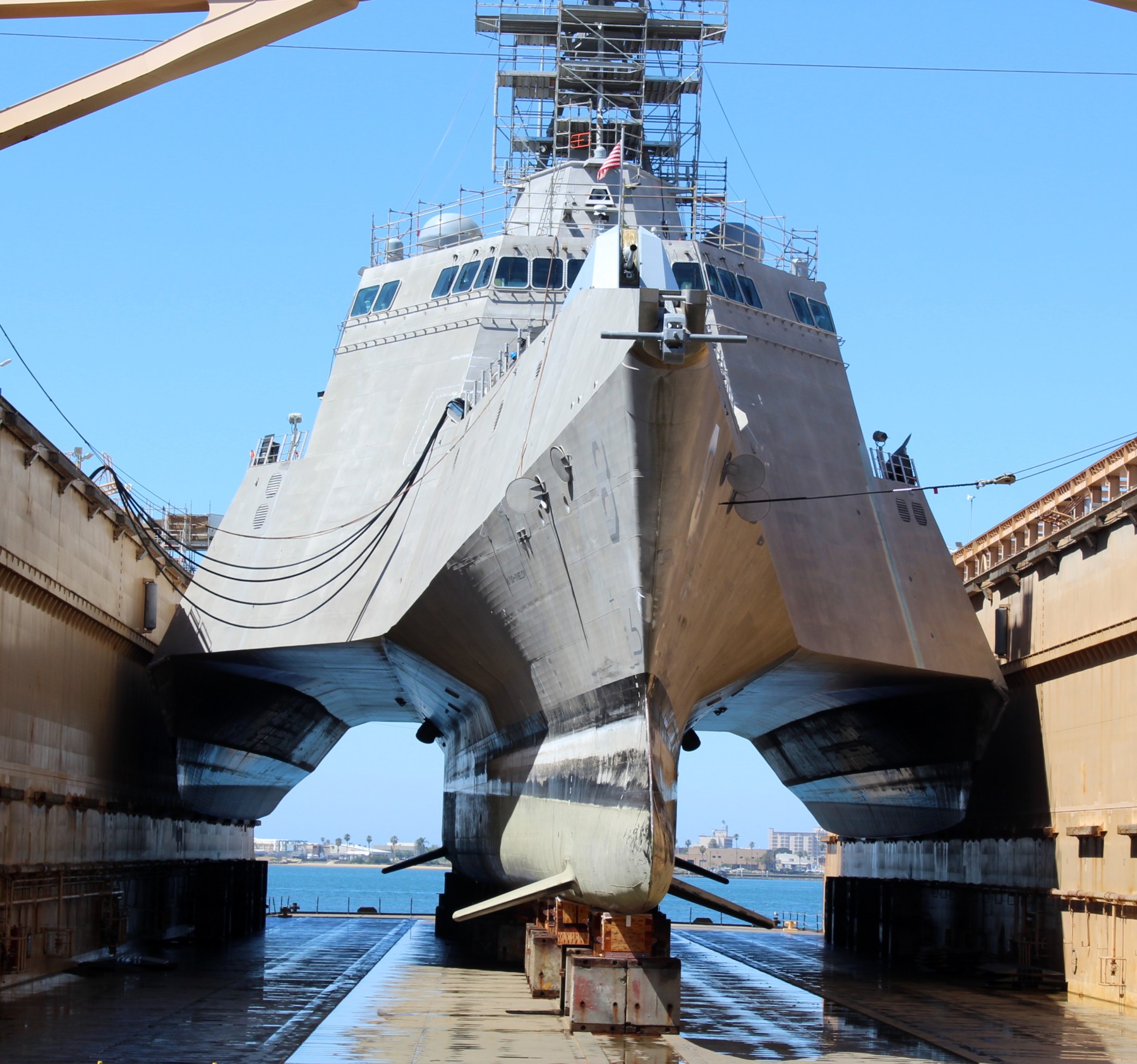 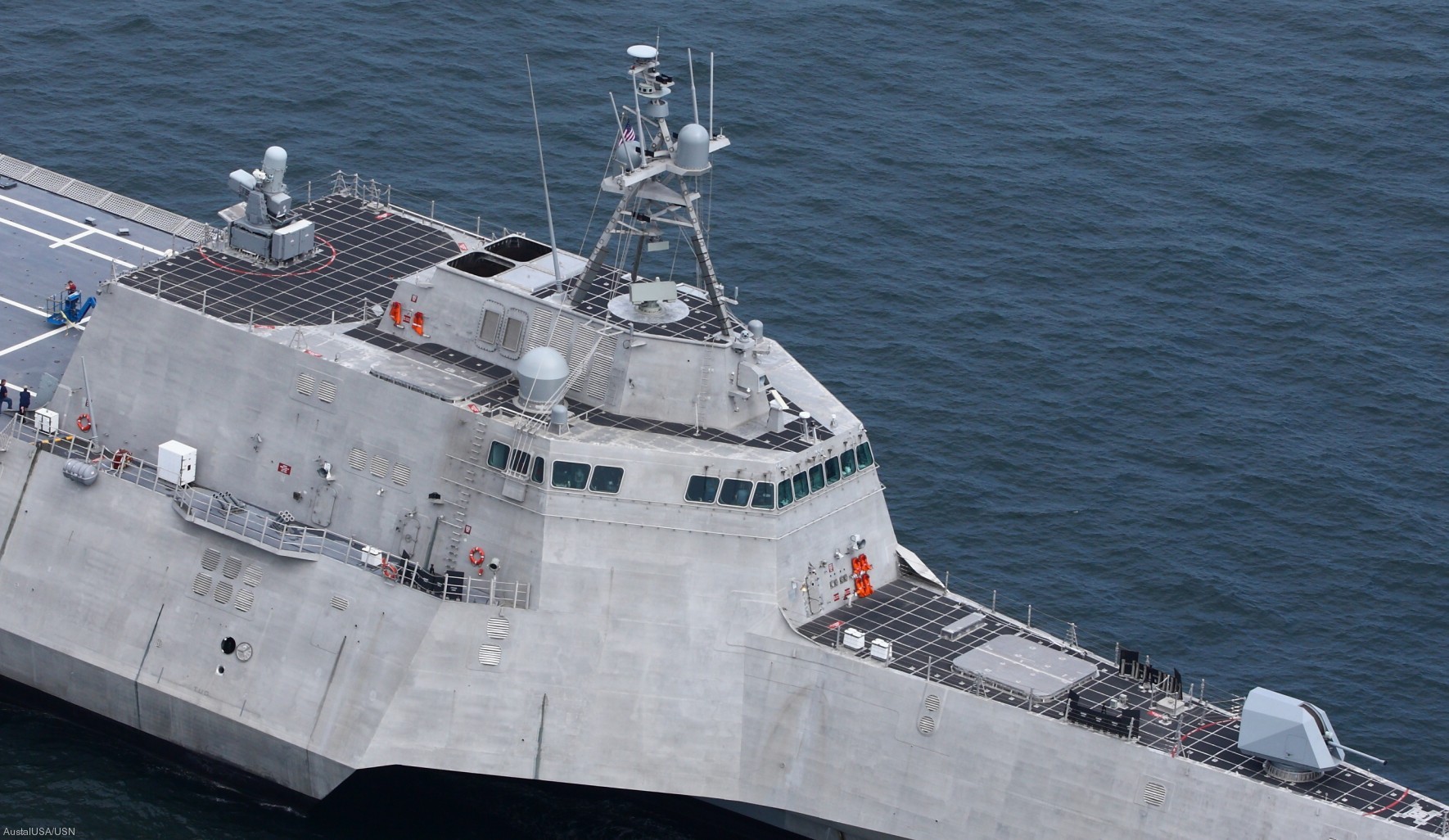 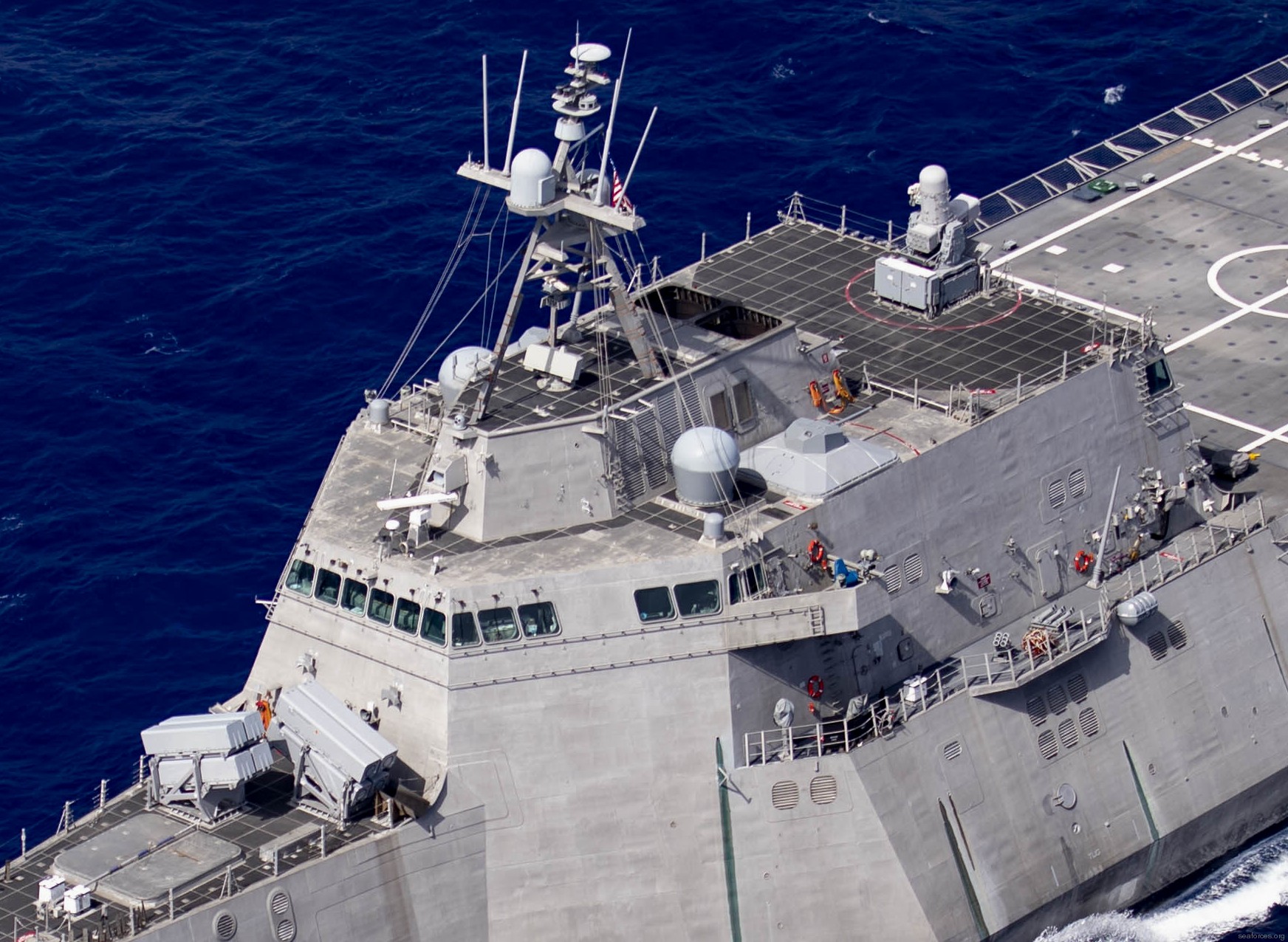 Naval Strike Missile (NSM) launcher - Mk.46 30mm guns (top, both sides) - Mk.15 Mod.31 SeaRAM CIWS 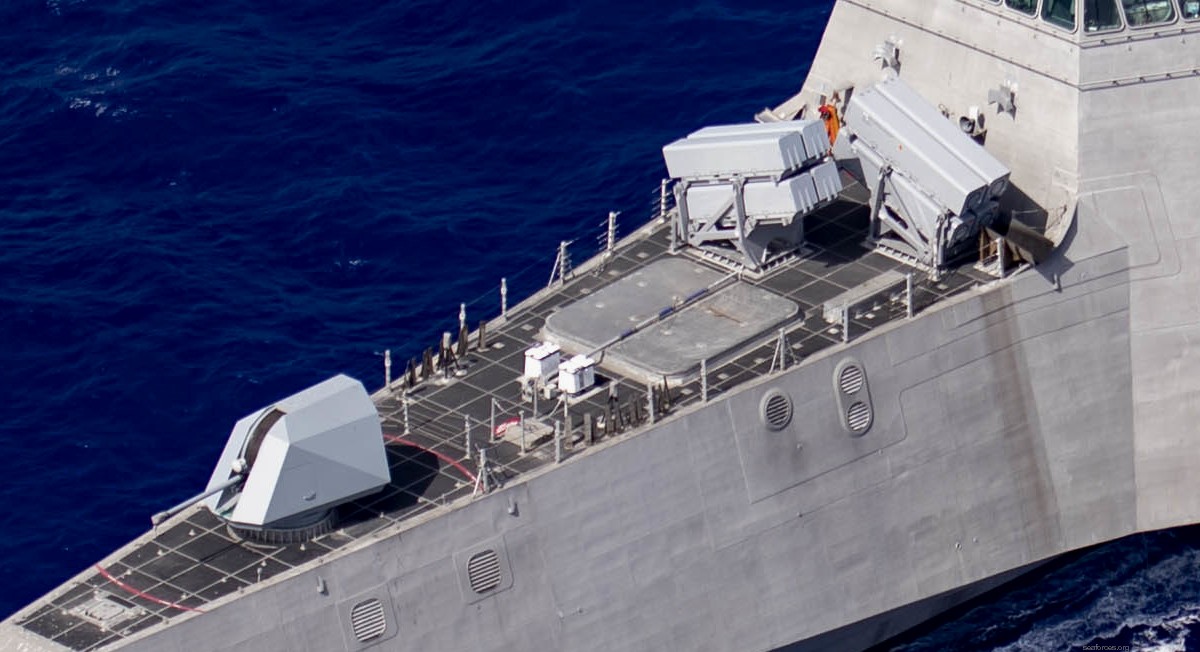 Mk.110 gun and box launchers for Naval Strike Missiles (NSM) 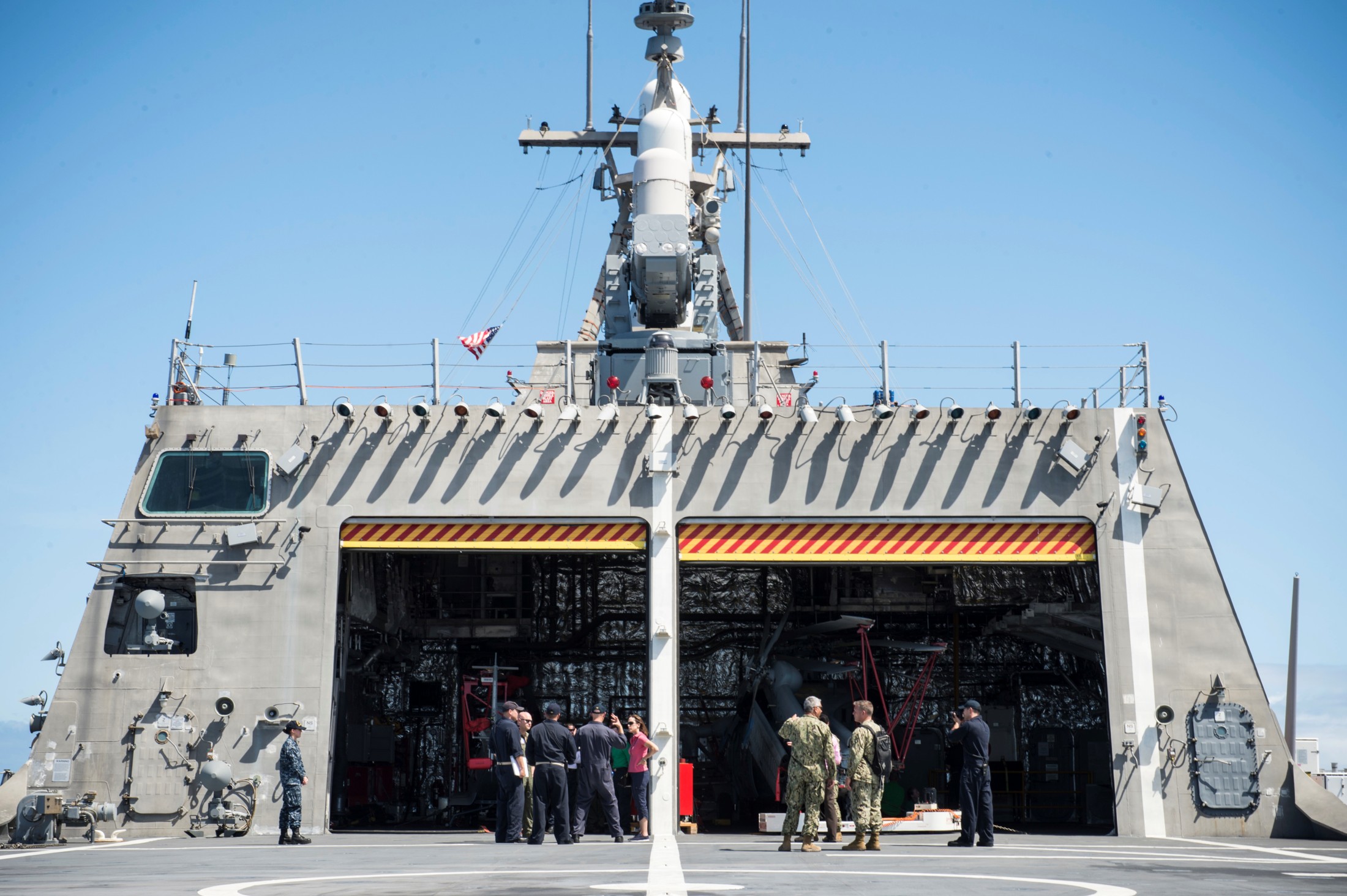 large hangar 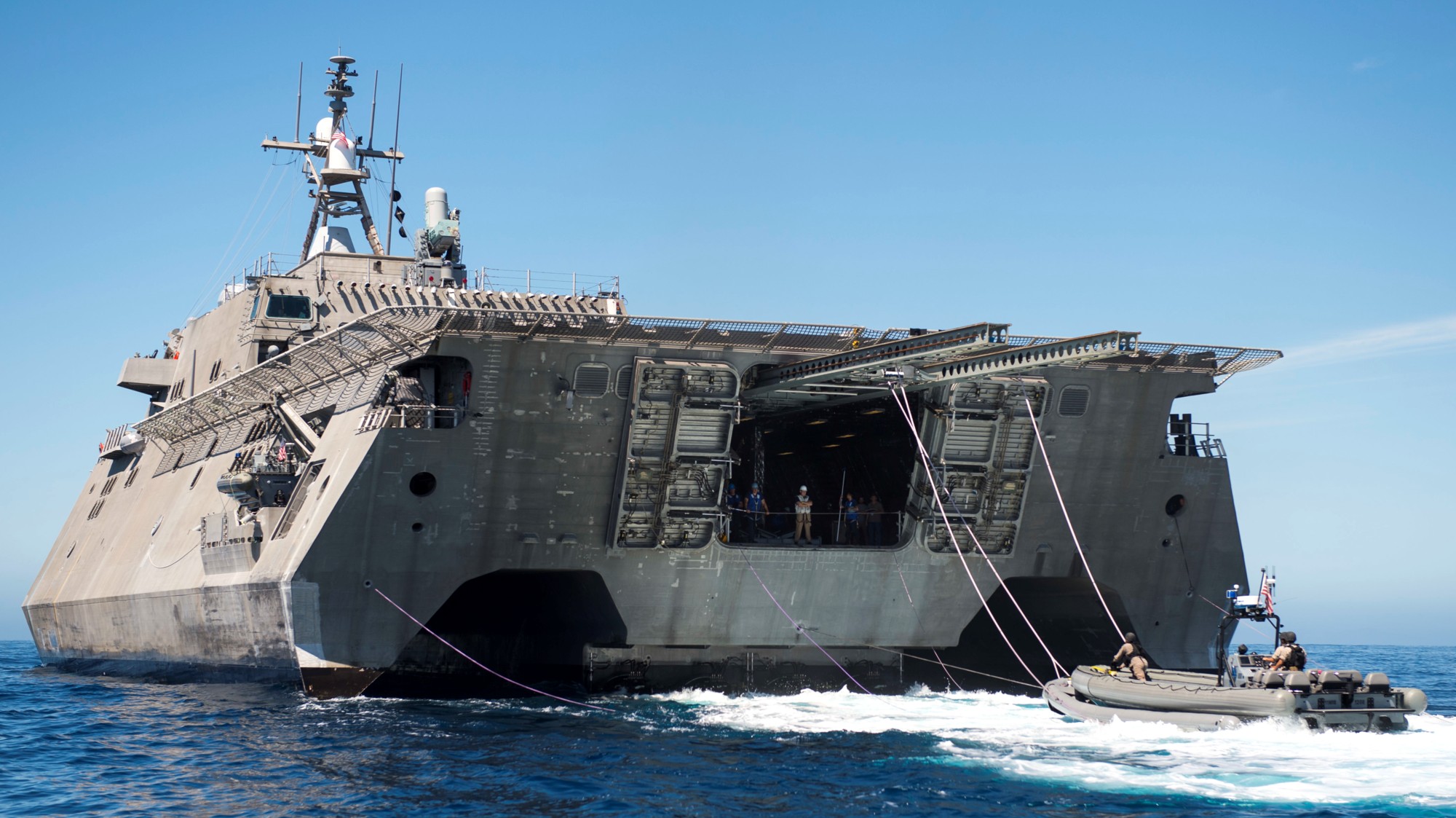 Twin Boom Extensible Crane (TBEC) RHIB operations 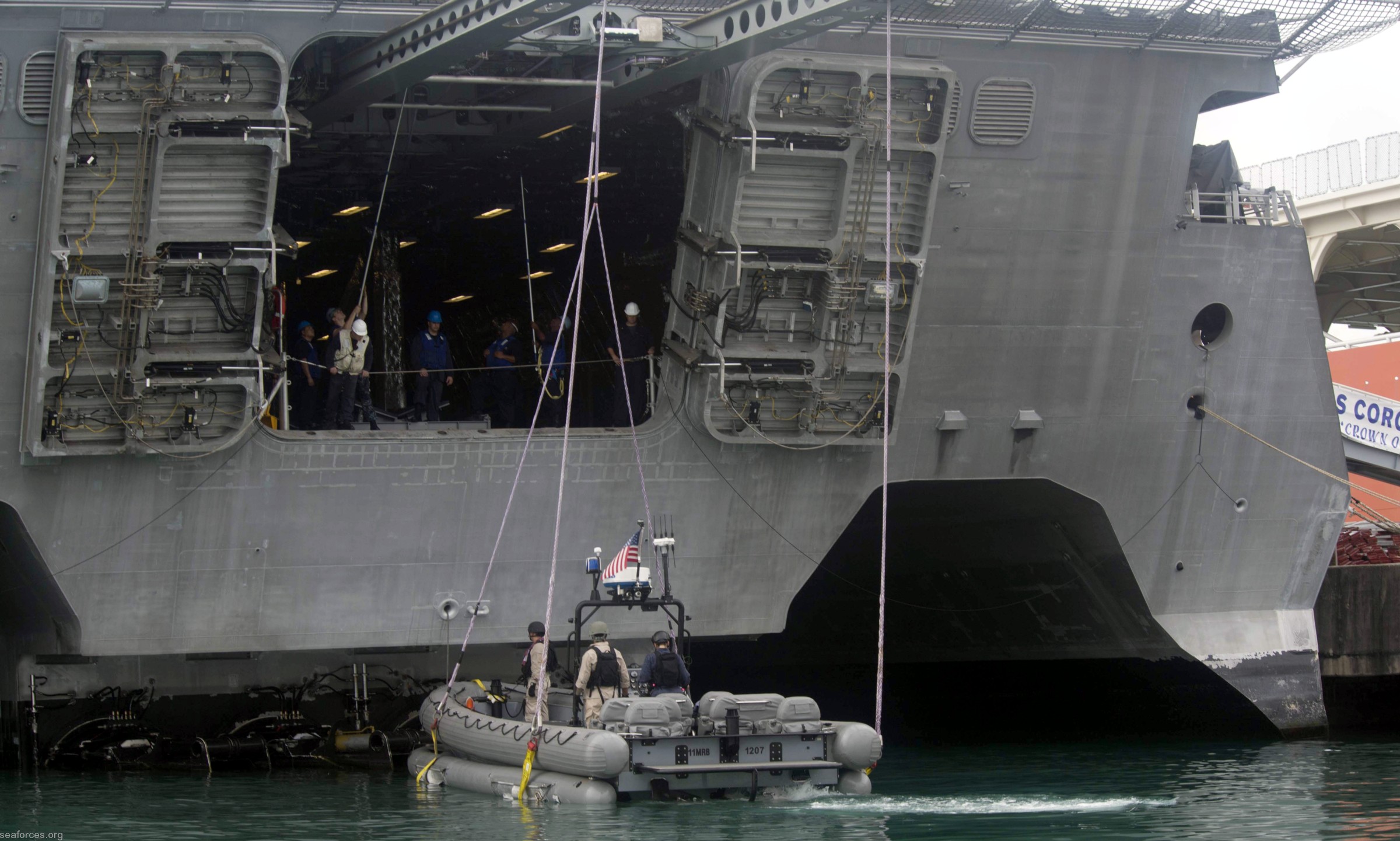 Twin Boom Extensible Crane (TBEC) RHIB operations 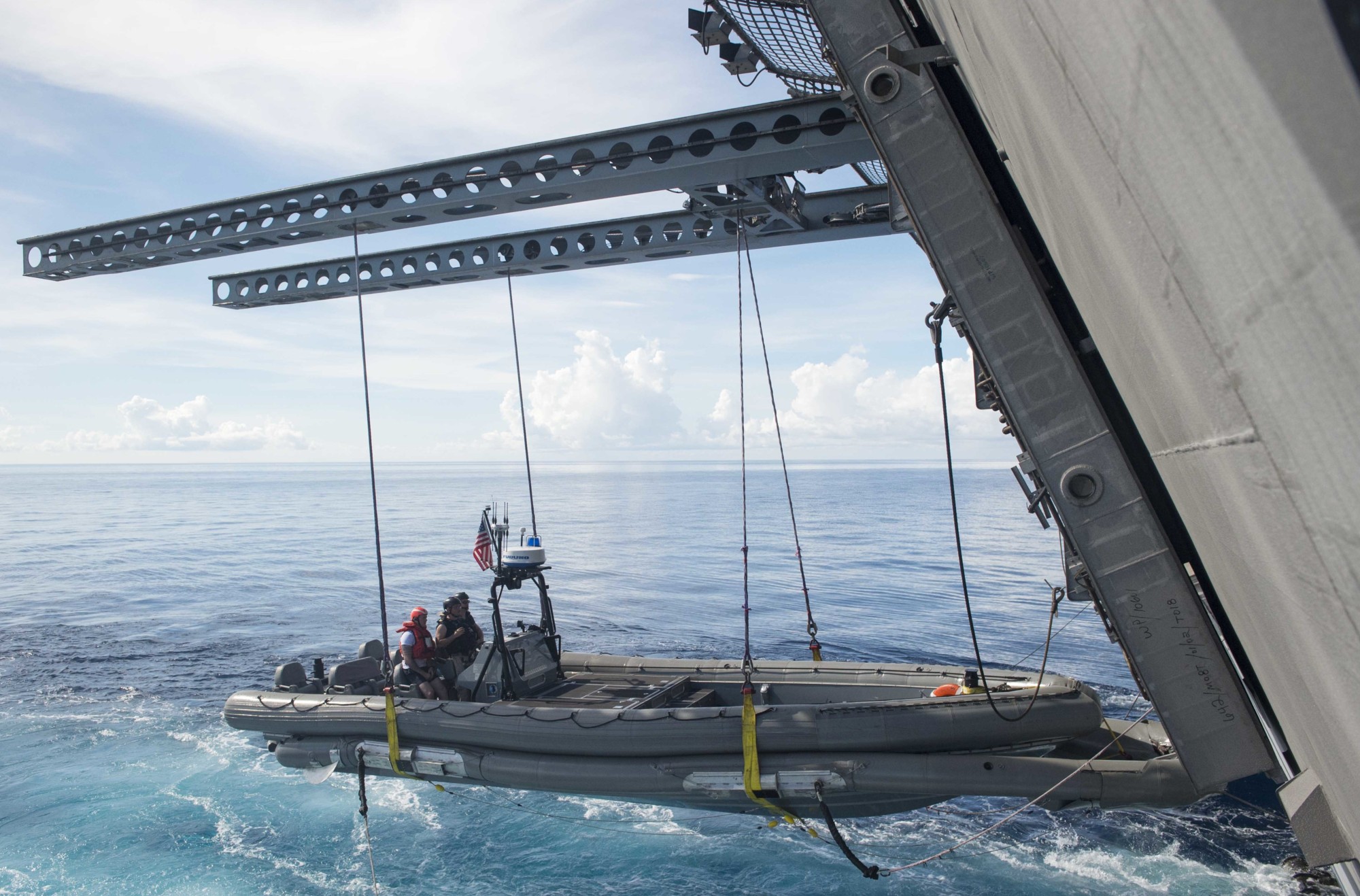 Twin Boom Extensible Crane (TBEC) RHIB operations 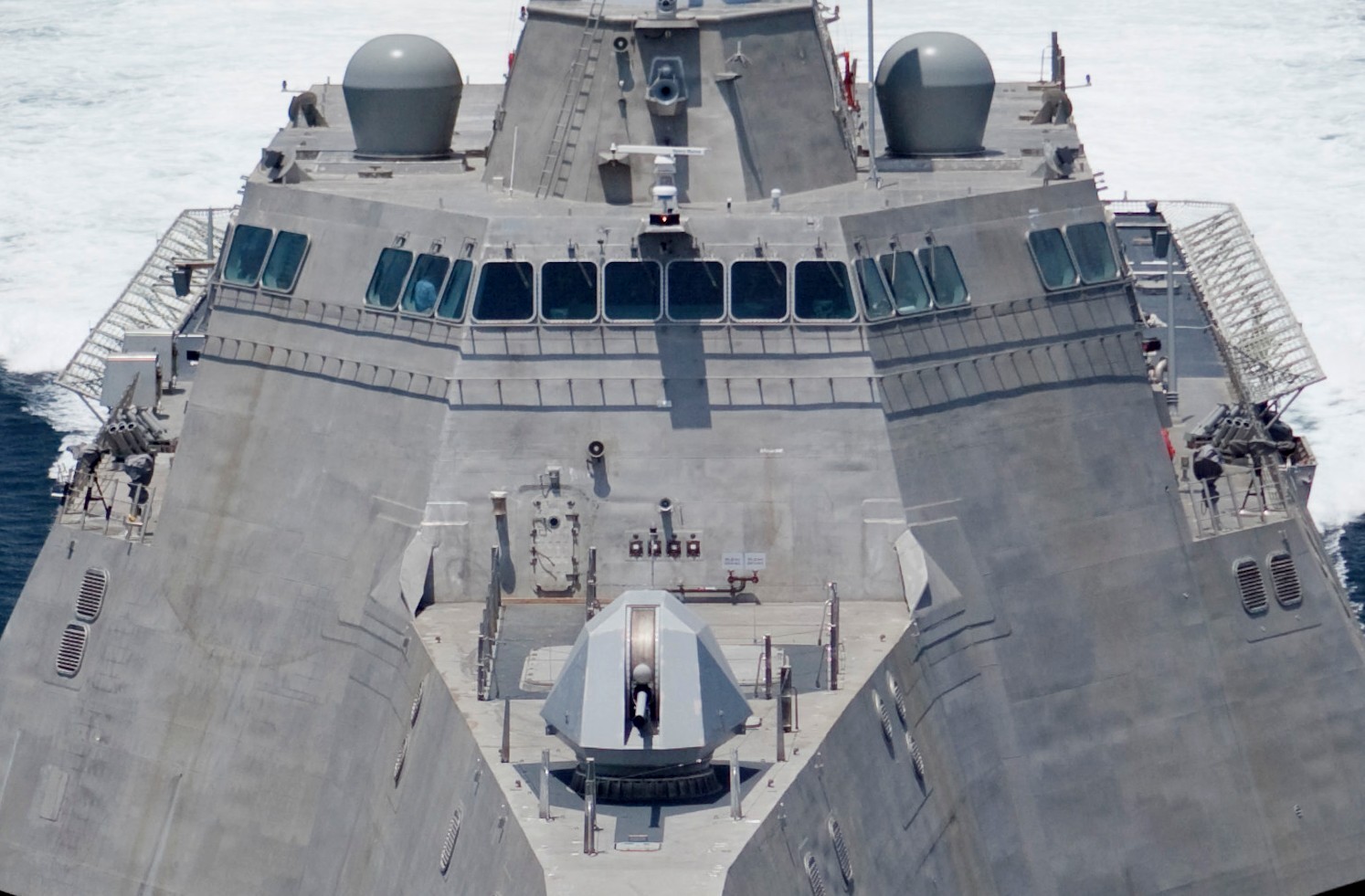 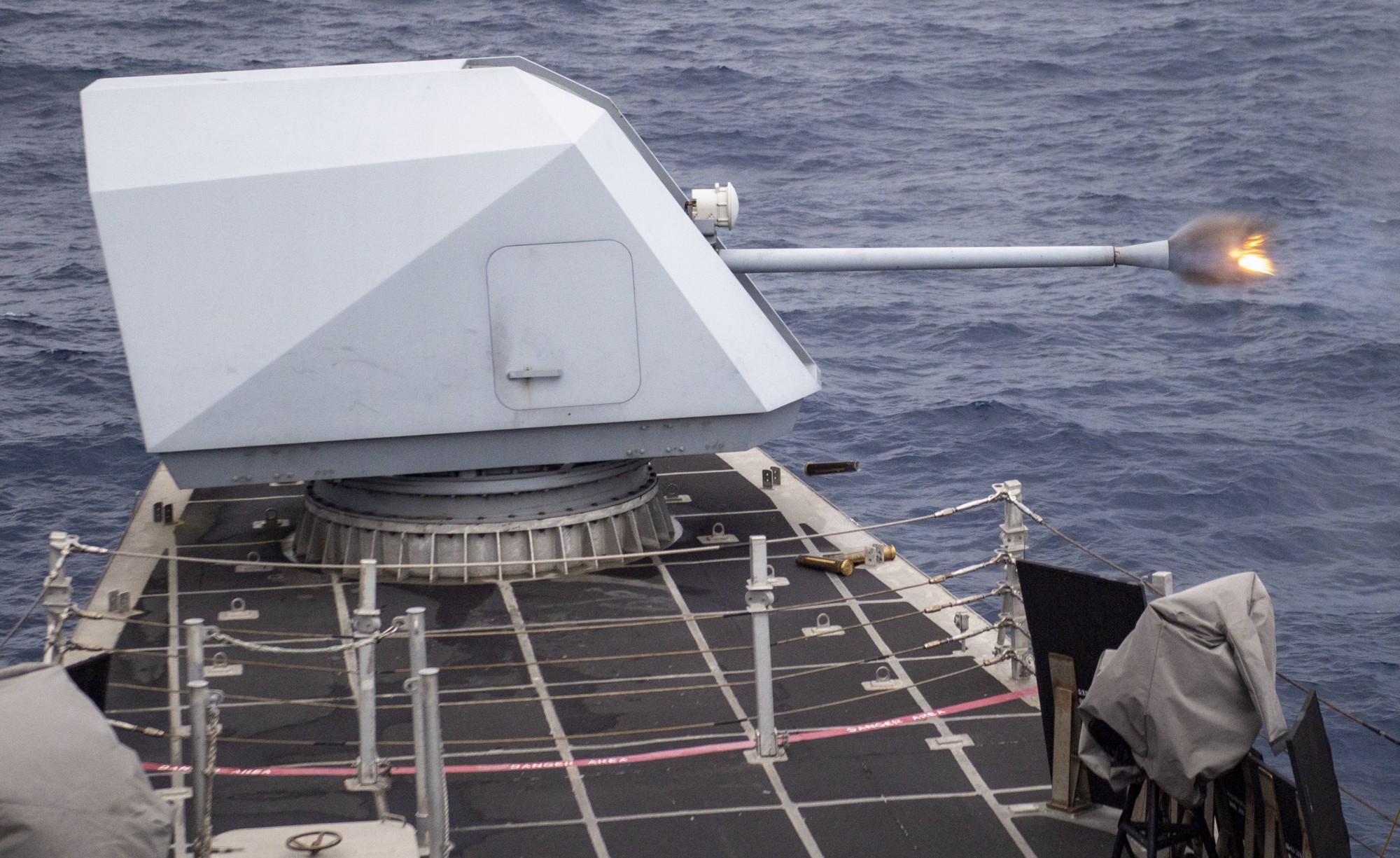 BAE Systems Mk.110 57mm gun 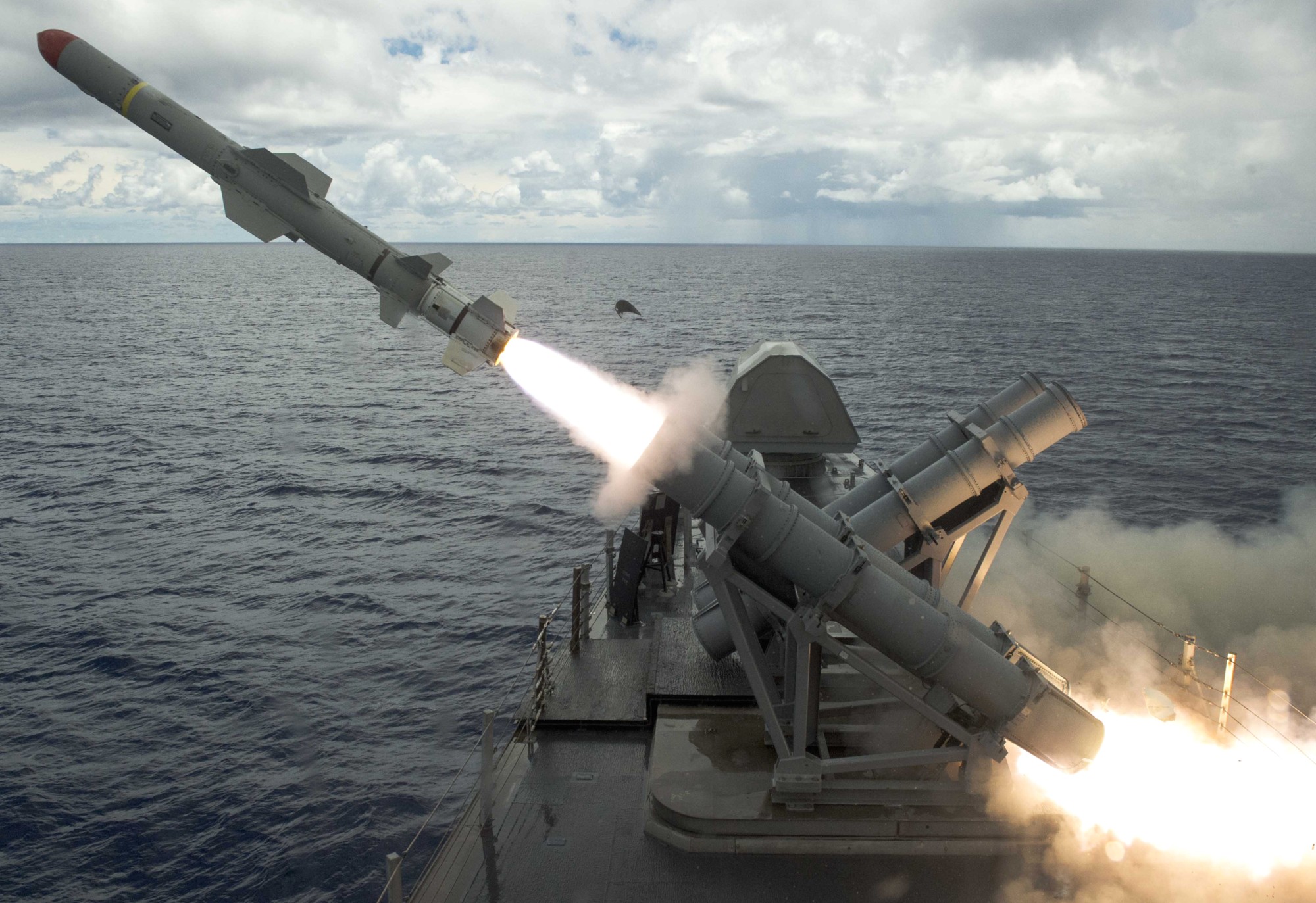 RGM-84 Harpoon SSM was fired from the Mk.141 launcher 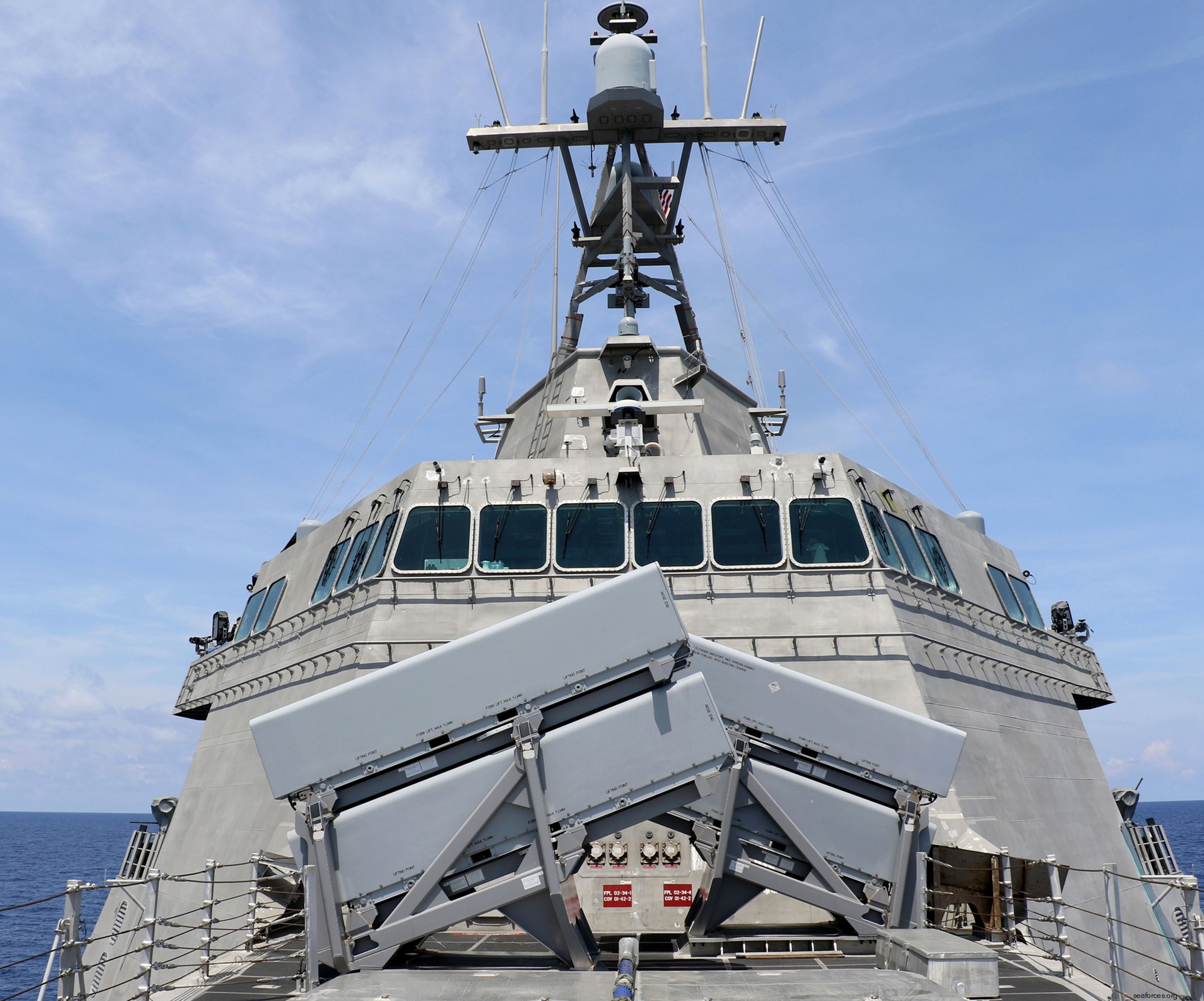 box launchers (2x4) for Kongsberg Naval Strike Missiles (NSM/JSM) 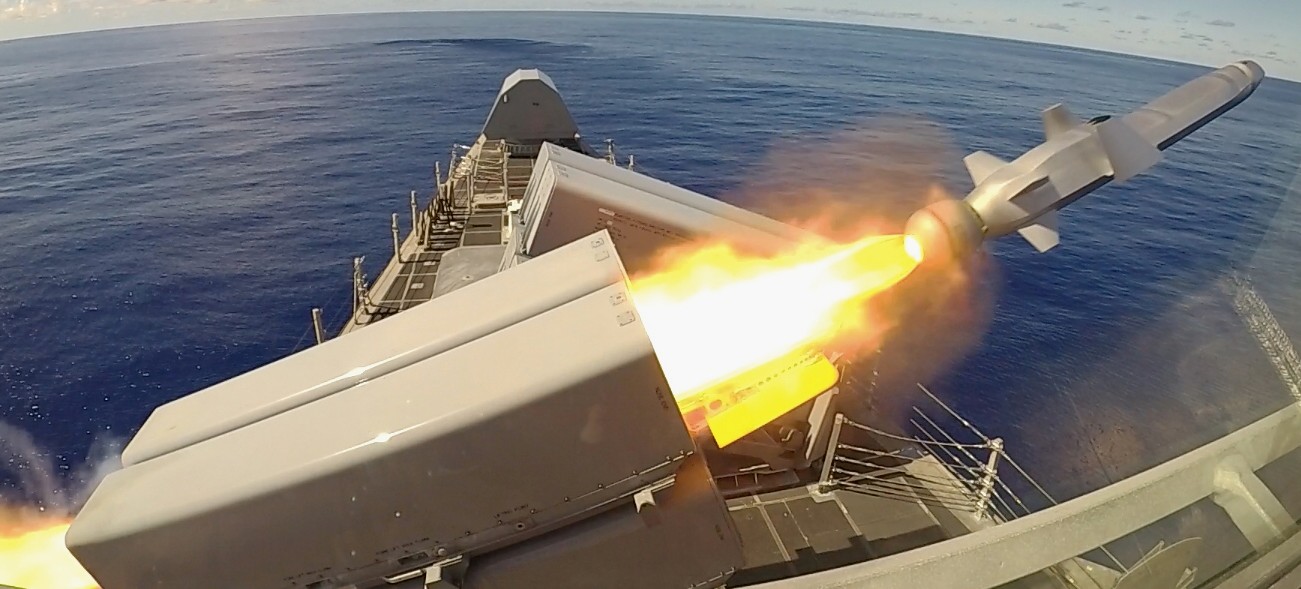 a Naval Strike Missile (NSM) was fired 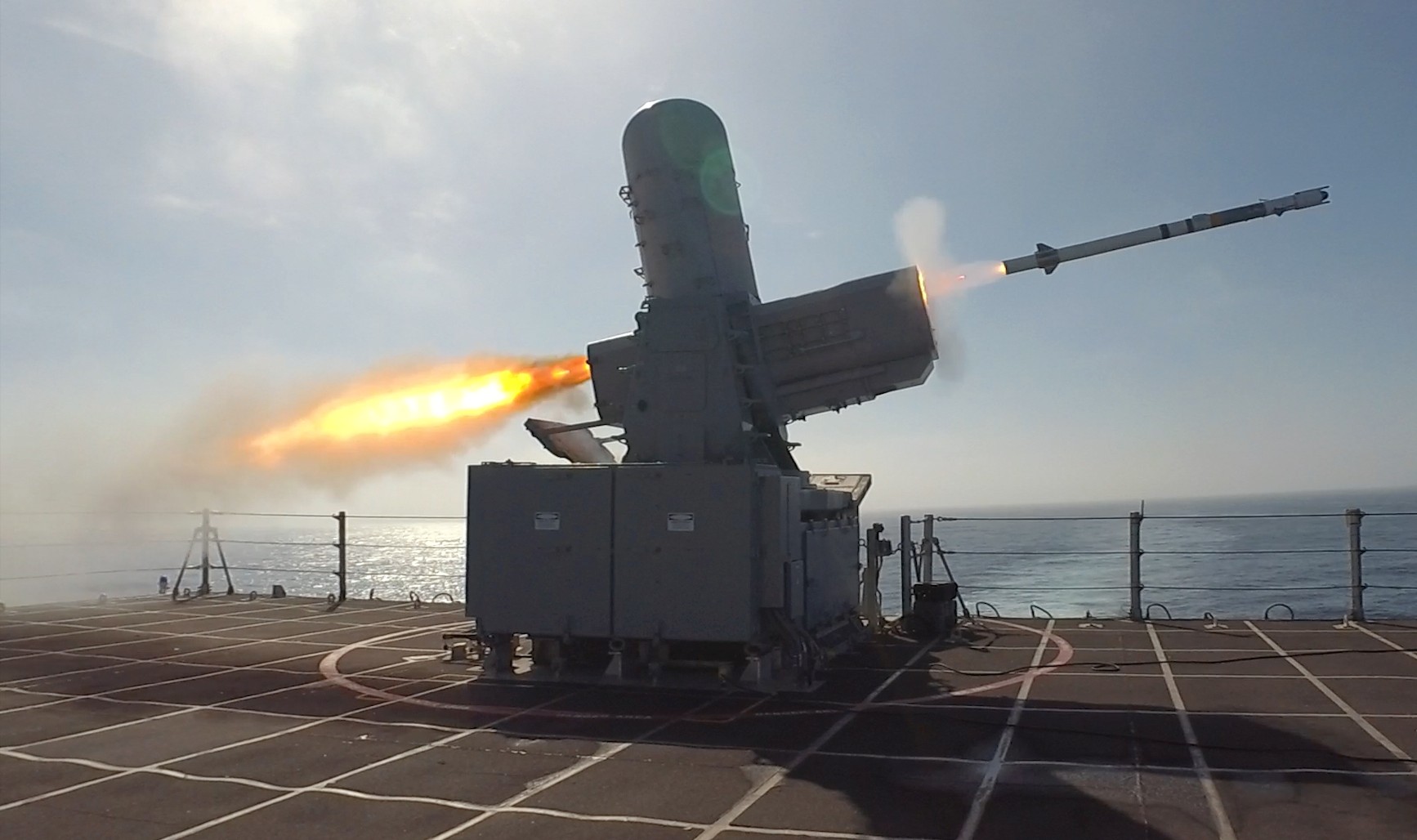 Mk.15 Mod.31 SeaRAM close-in weapon system (CIWS)  the Remote Minehunting System (RMS) and an AN/AQS-20 mine hunting sonar are parts of the Mine-Countermeasures Mission (MCM) package 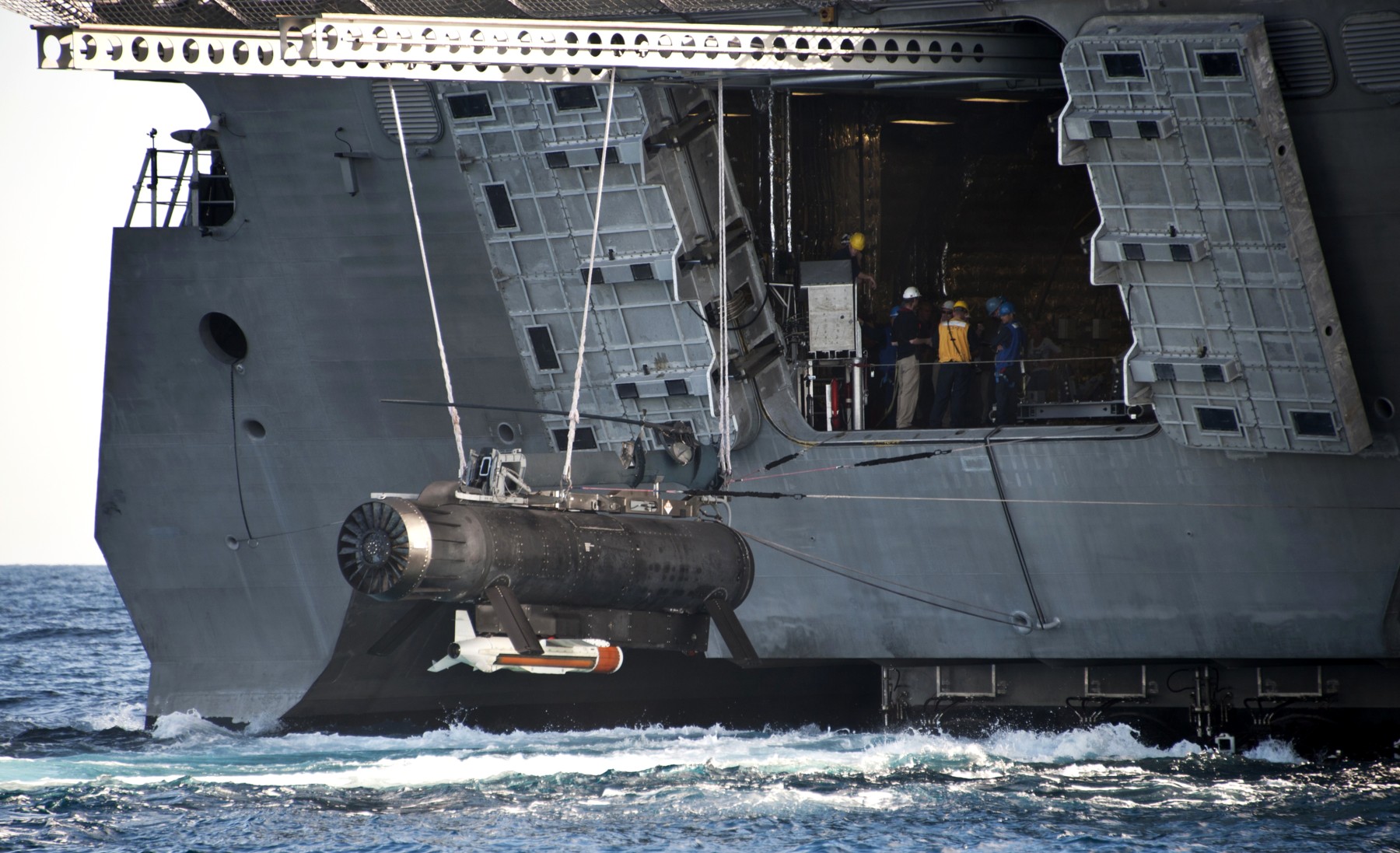 Remote Minehunting System (RMS) with AN/AQS-20 mine hunting sonar (white) 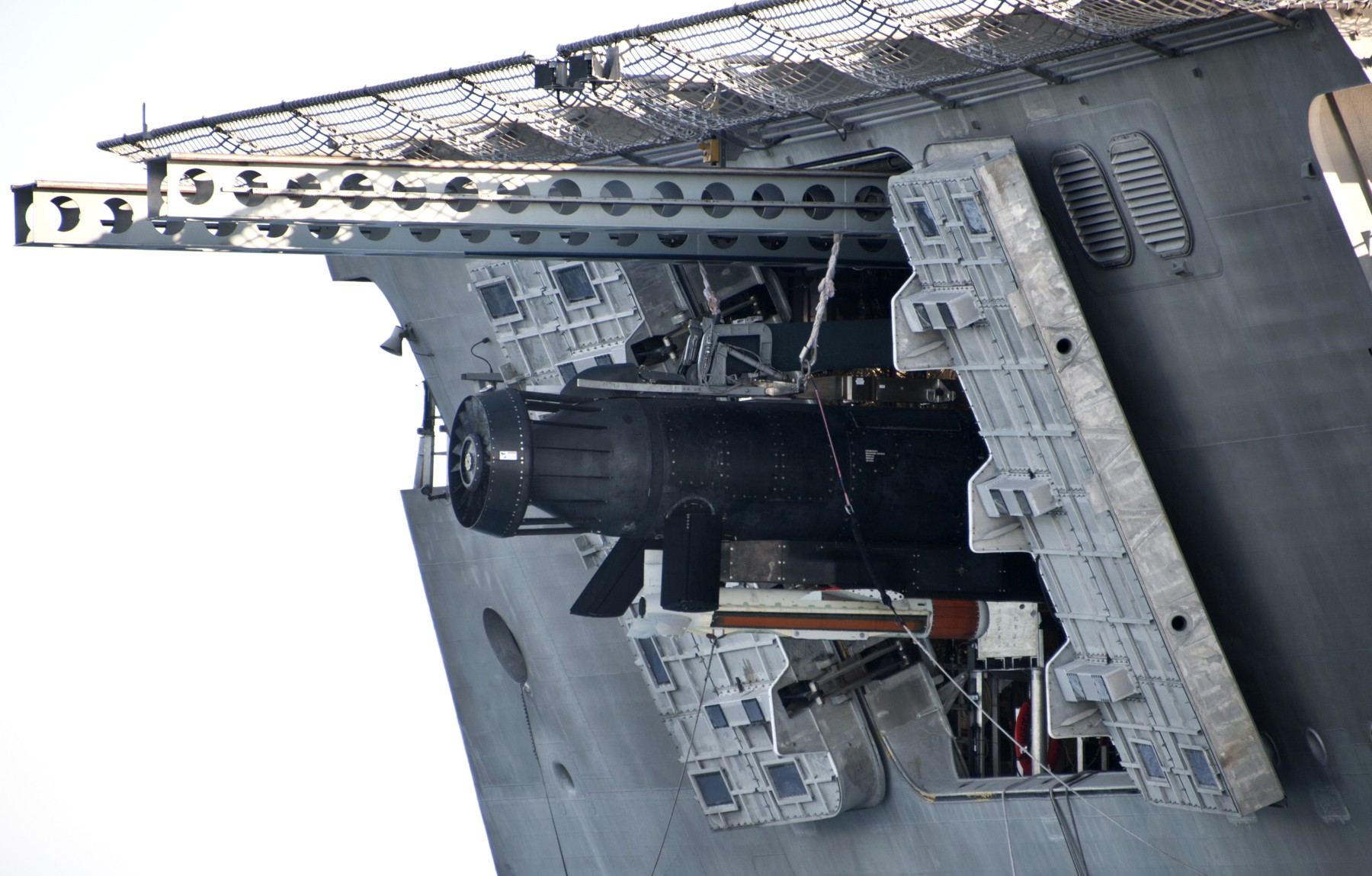 Remote Minehunting System (RMS) returning to the mission bay 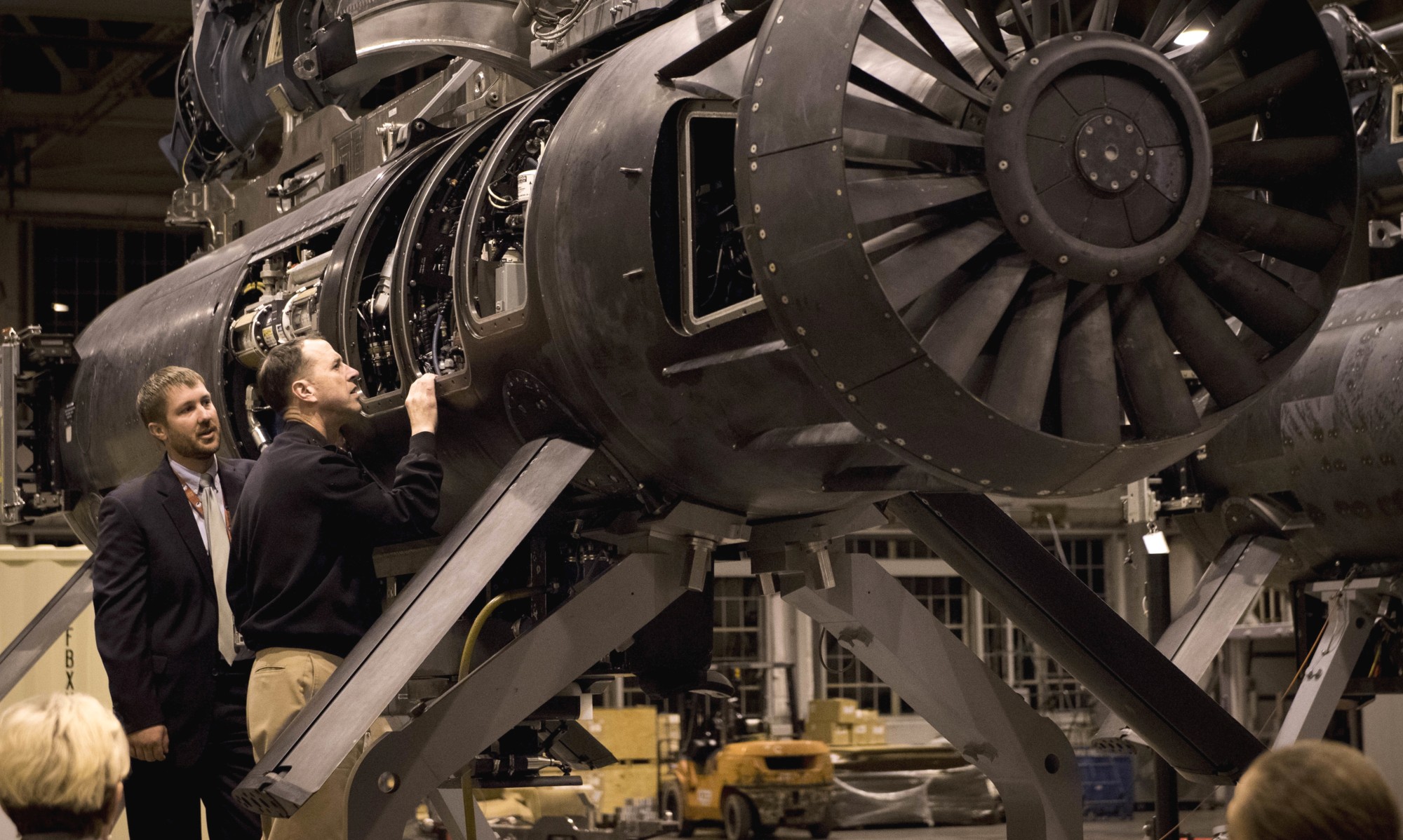 remote minehunting system (RMS), part of the mine countermeasures (MCM) mission package 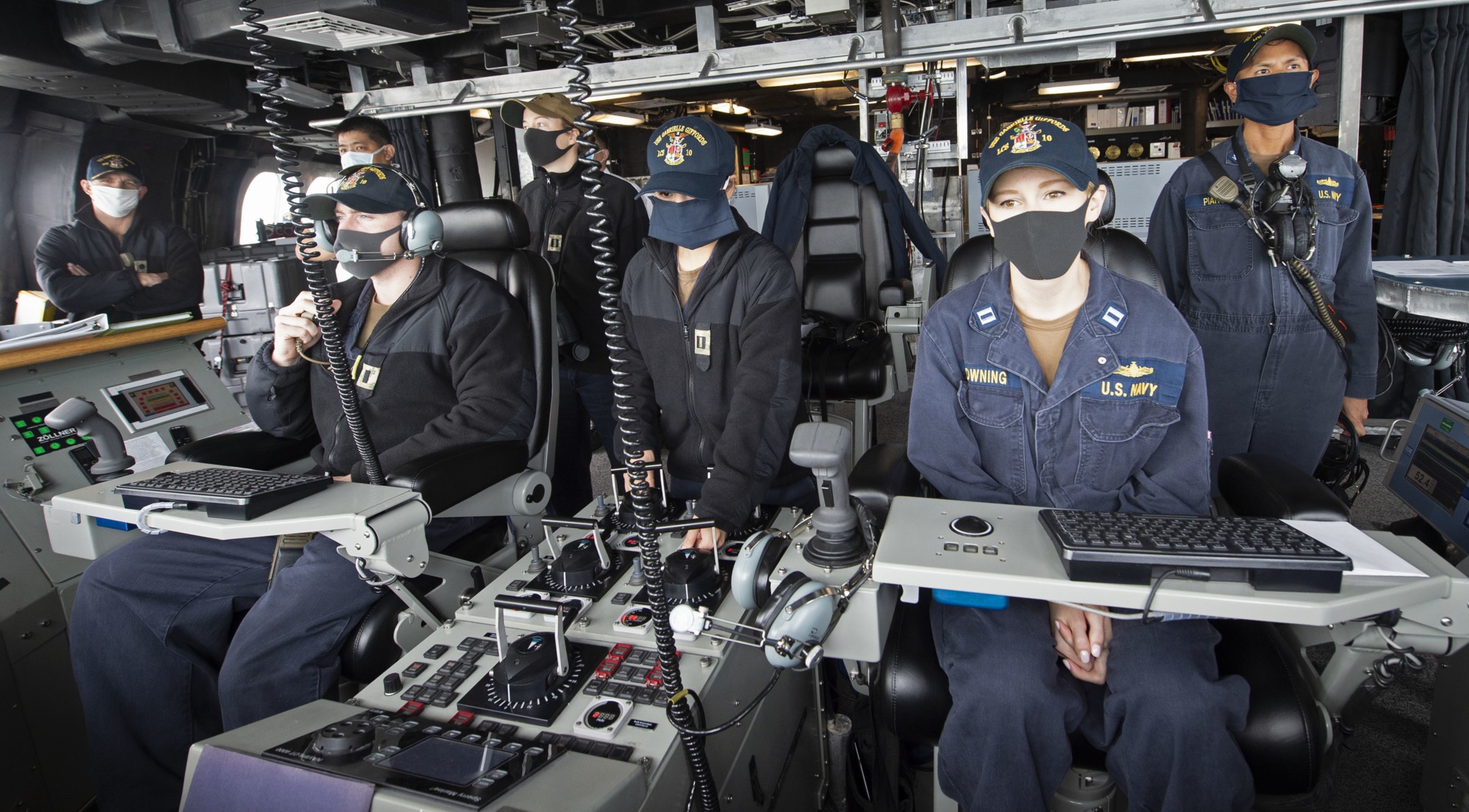 bridge 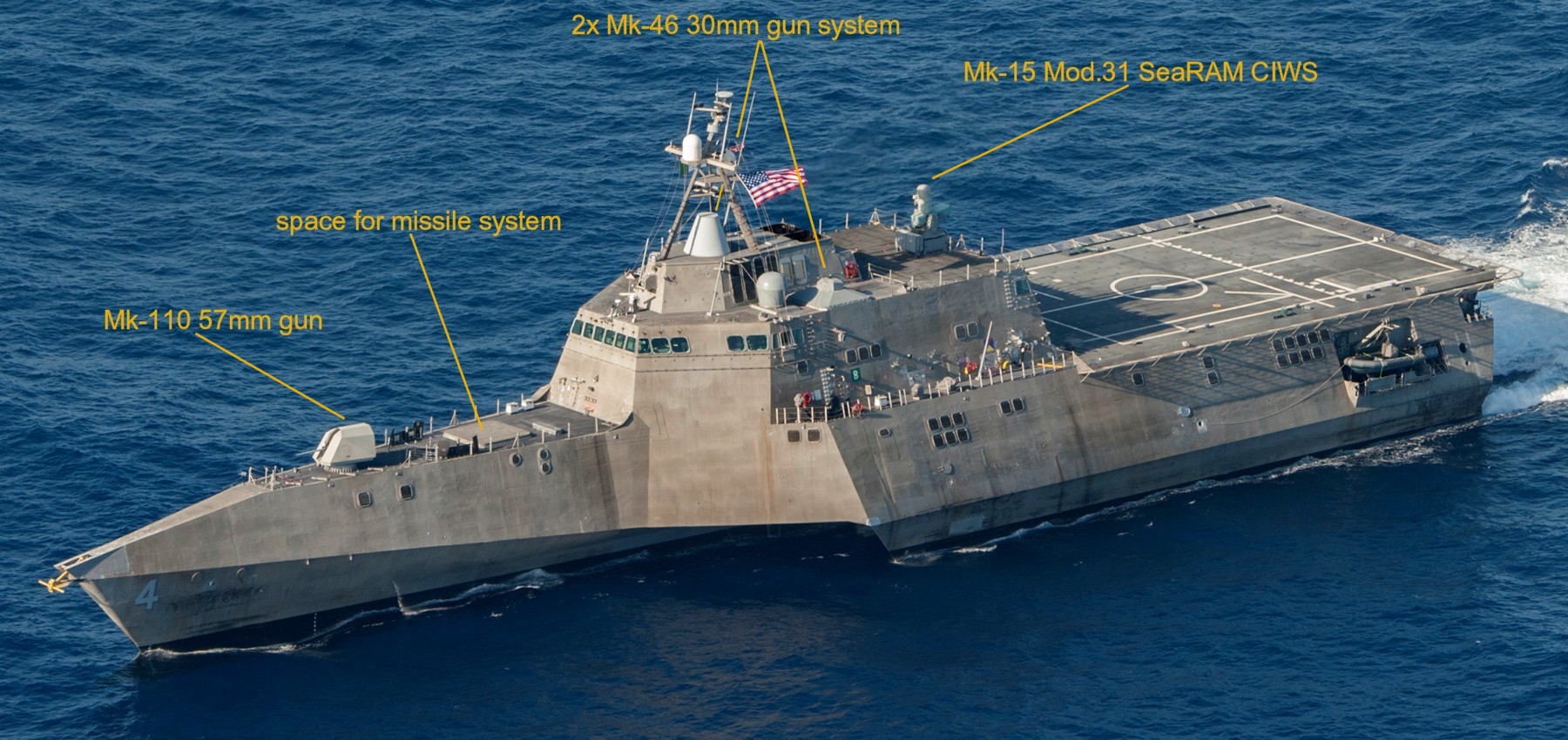 armament options 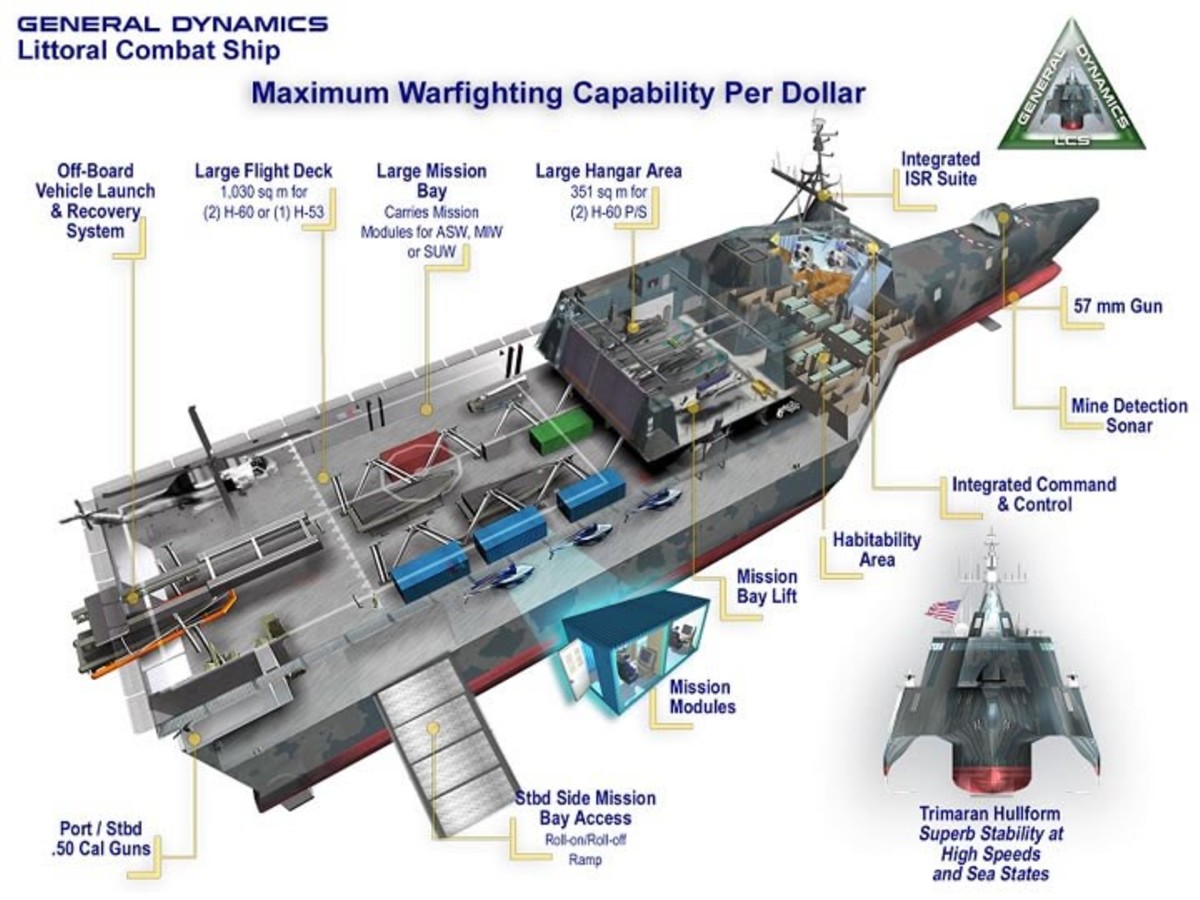 |
|
|
|
seaforces.org |
USN ships
start page | |